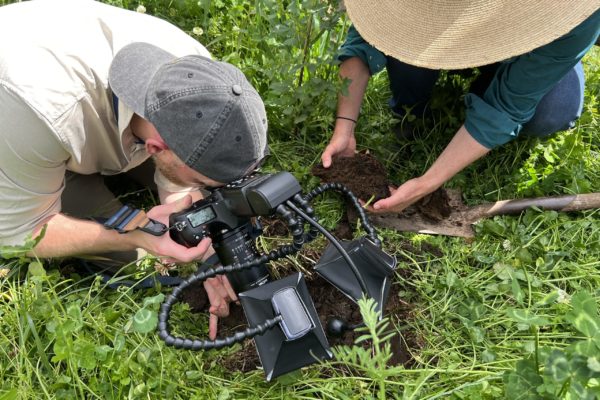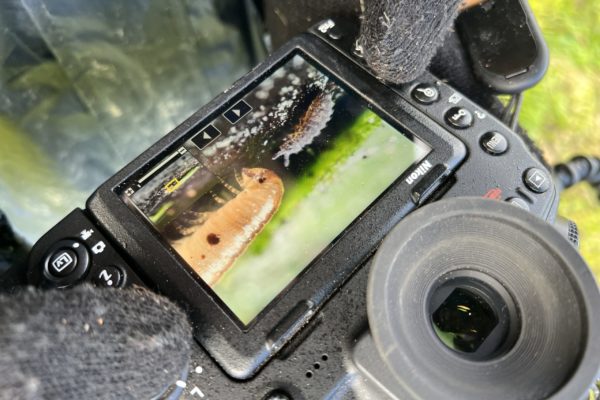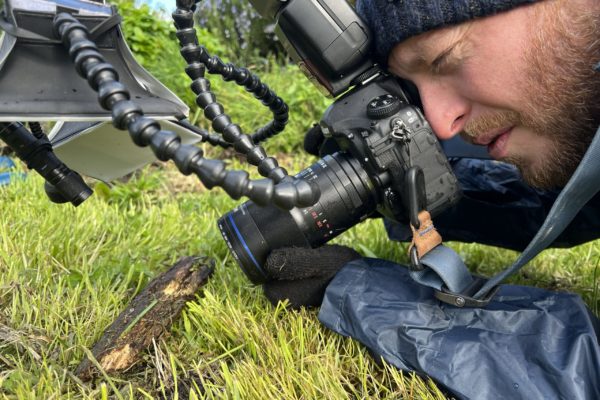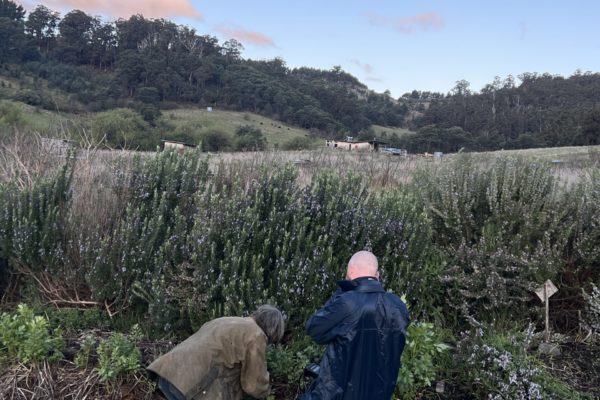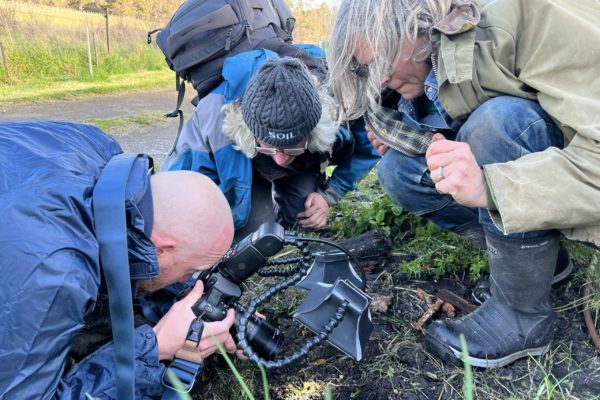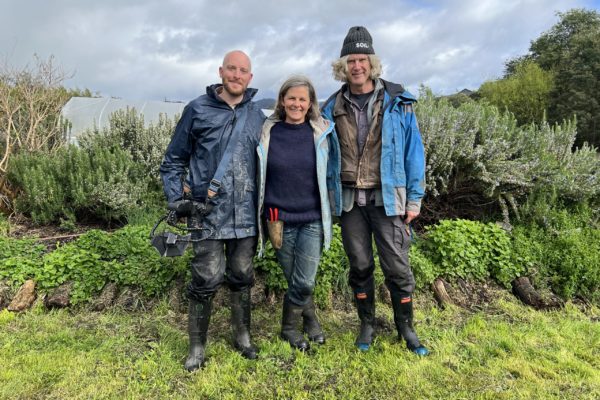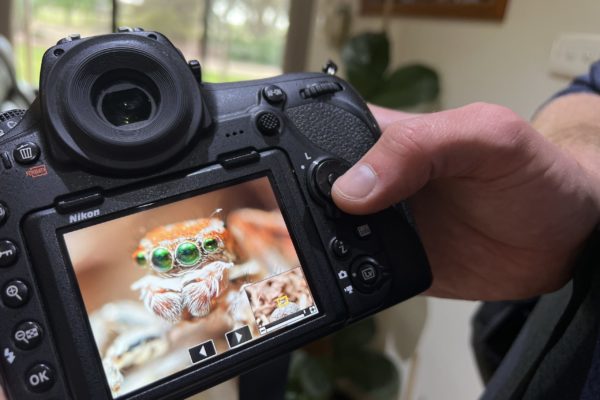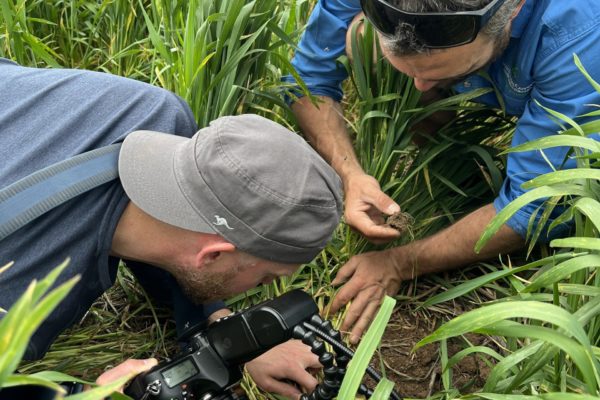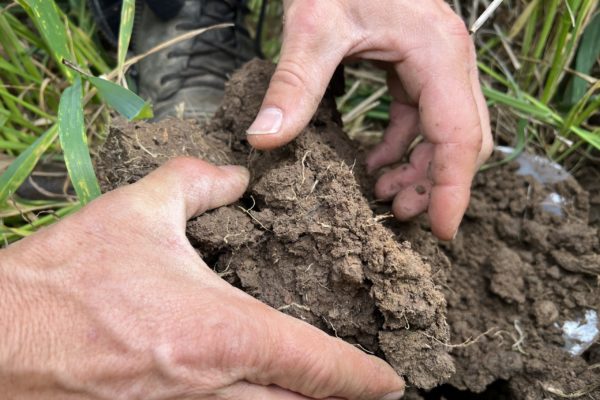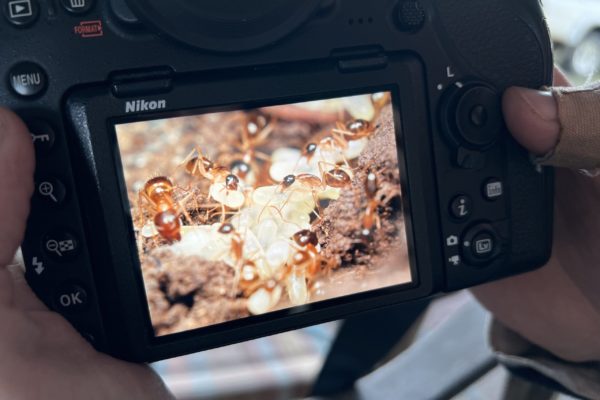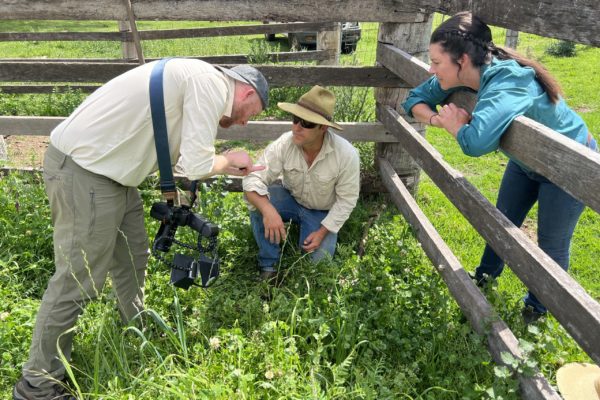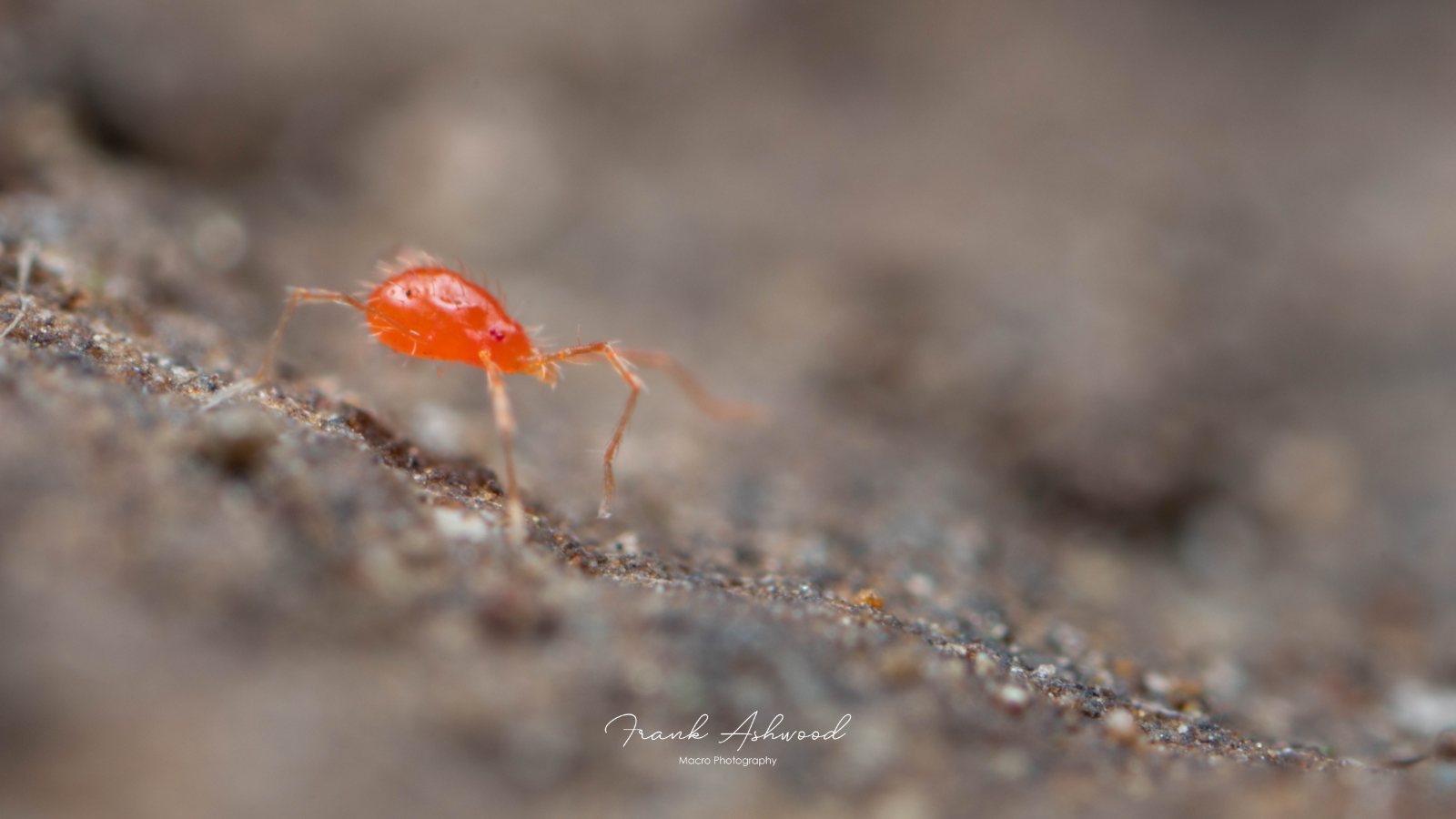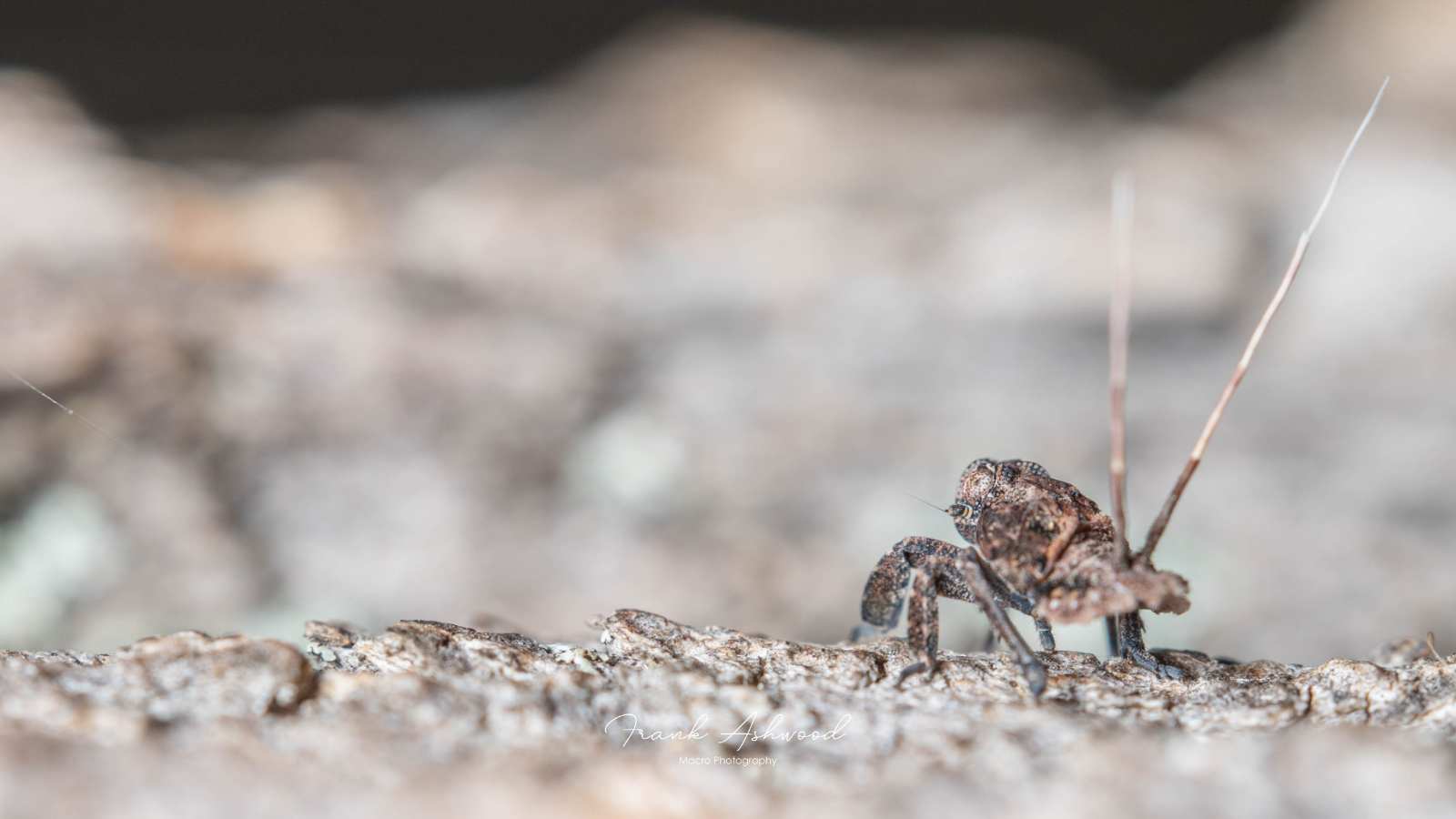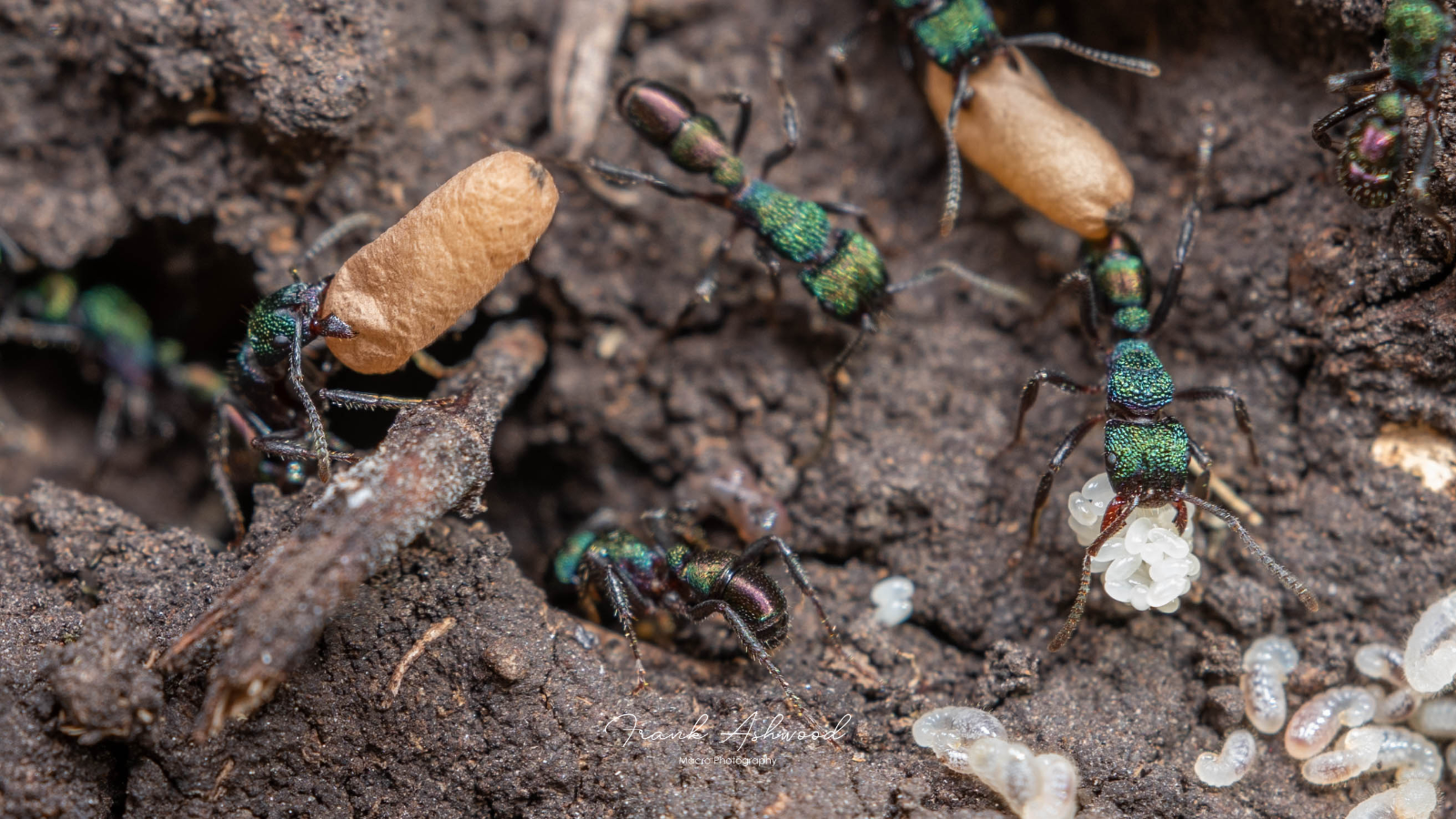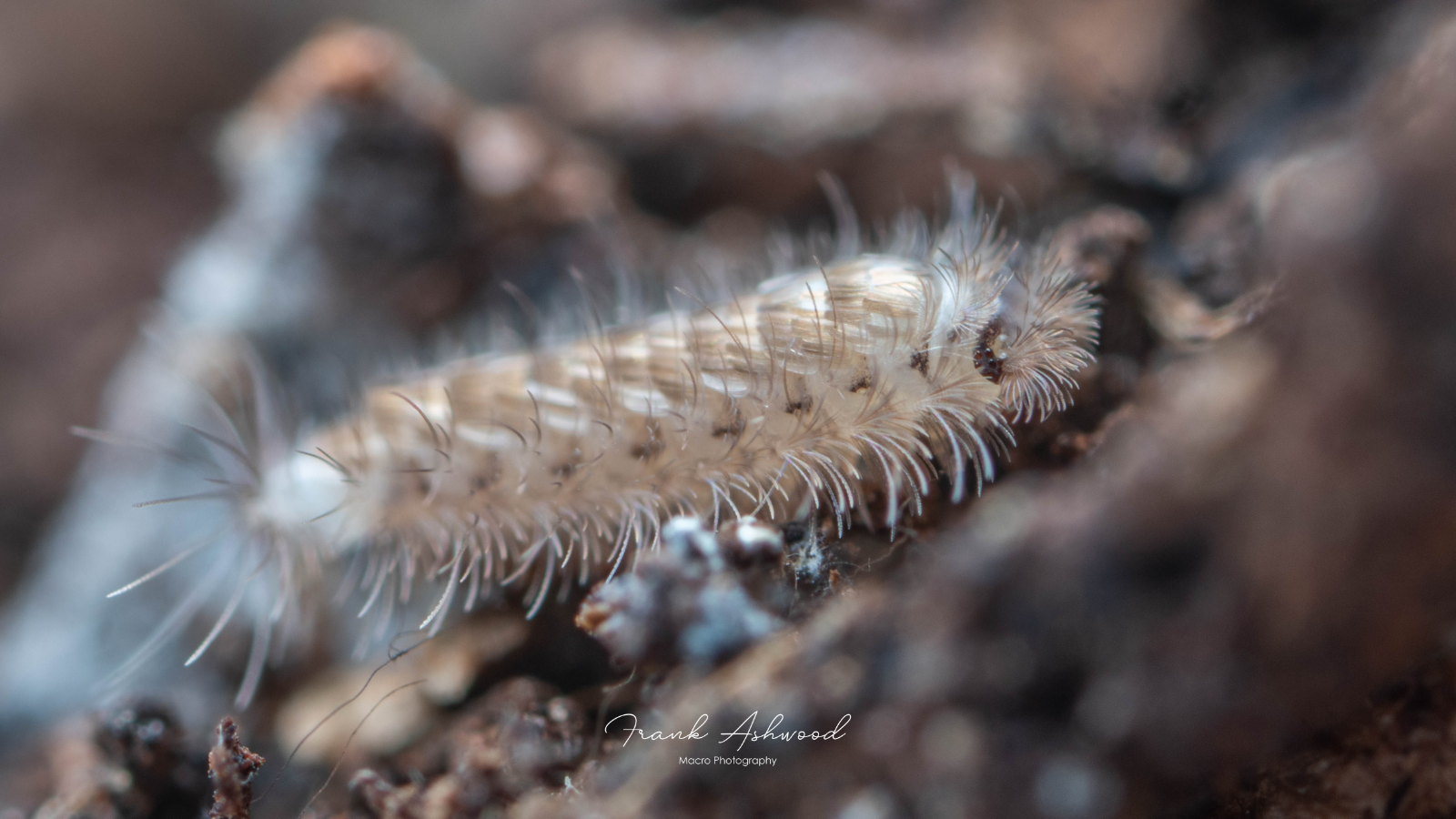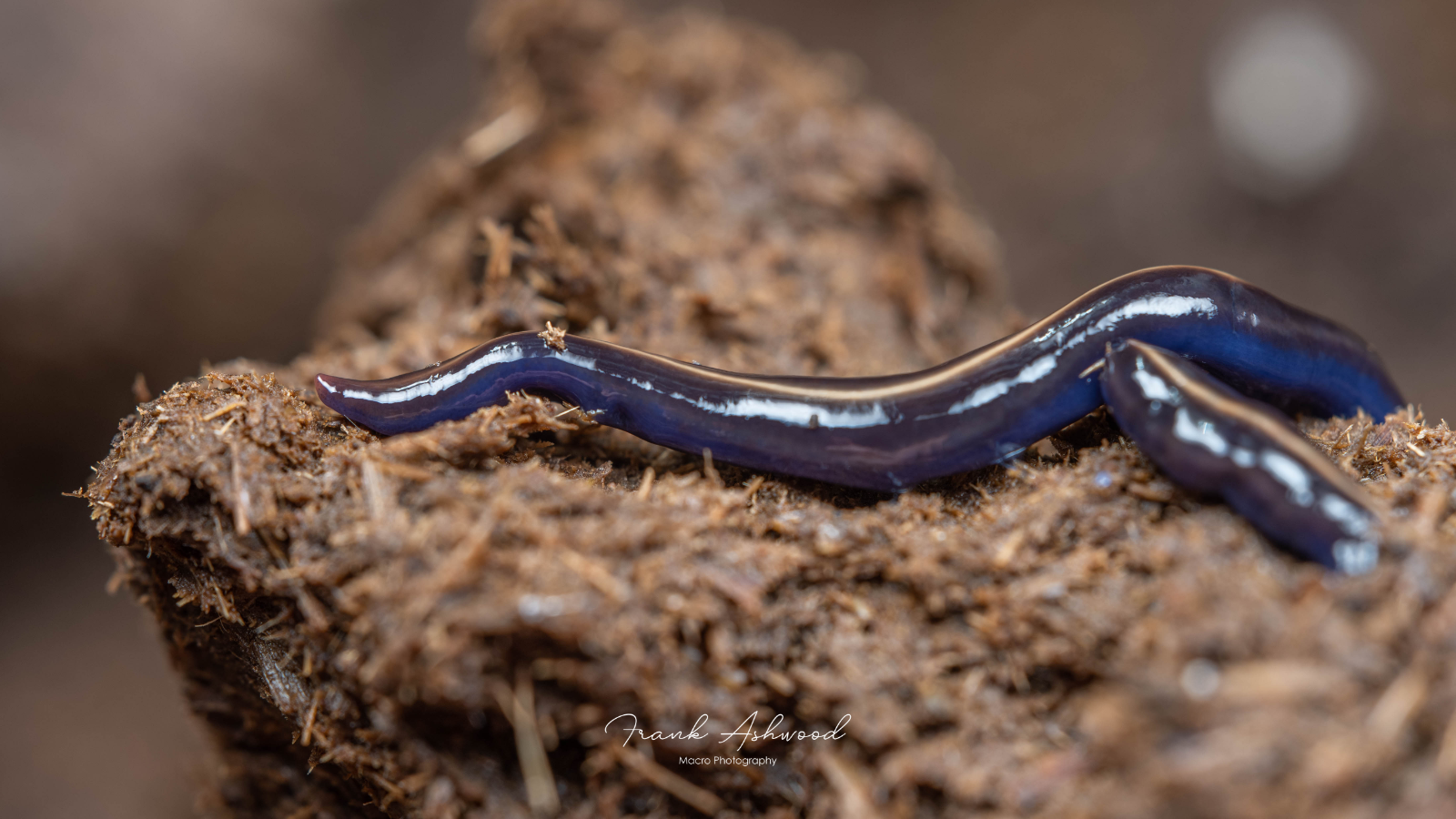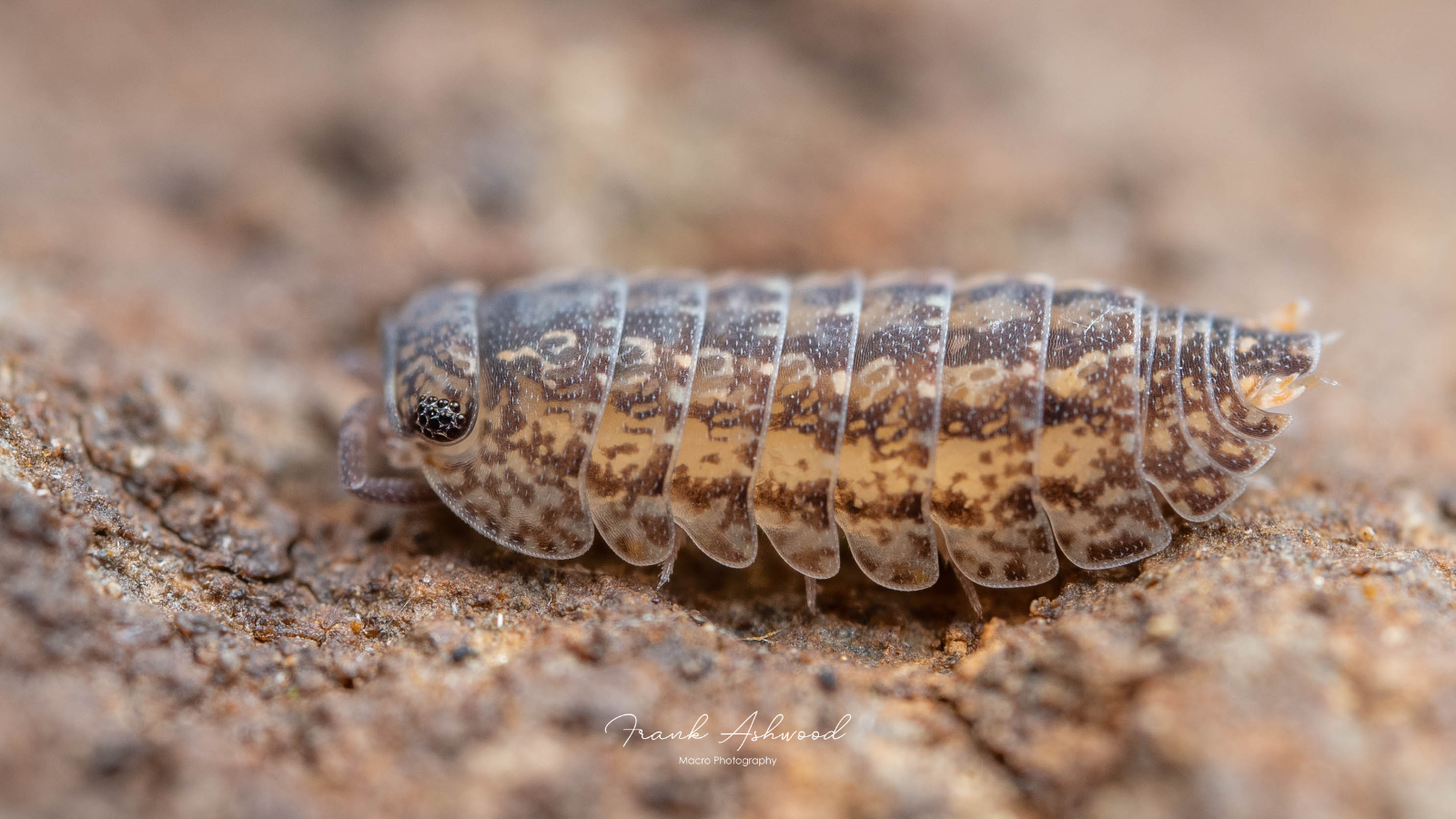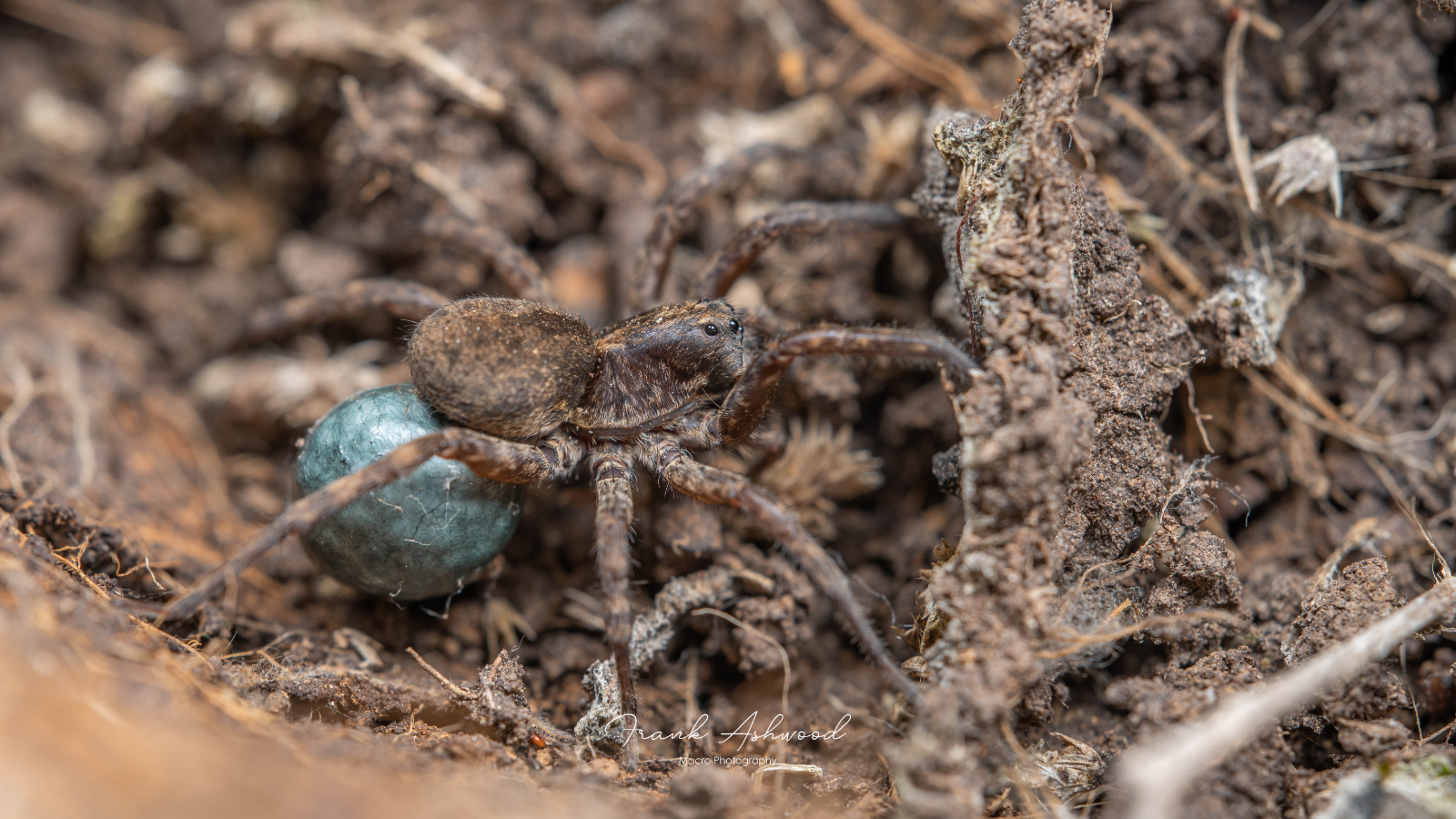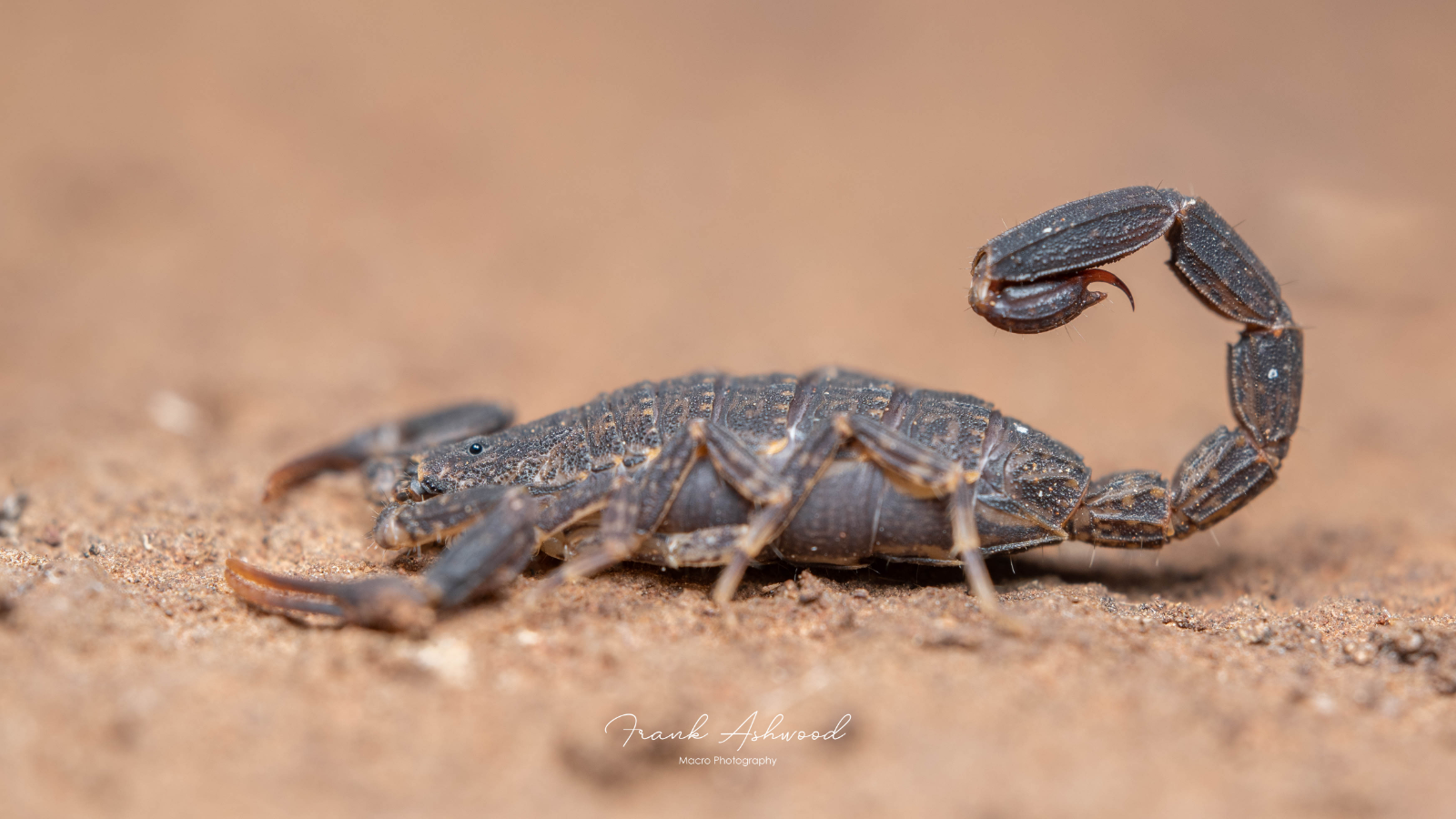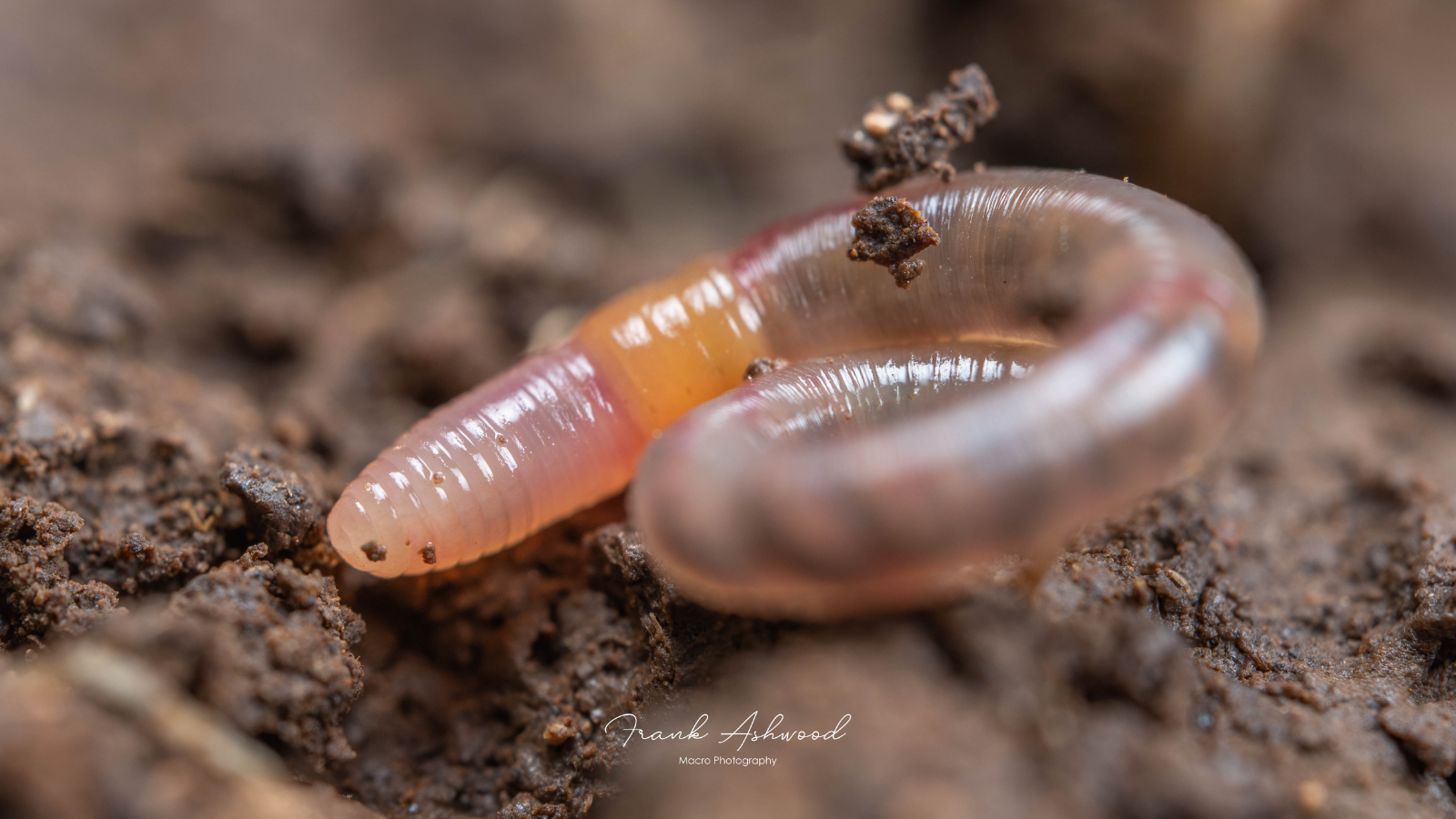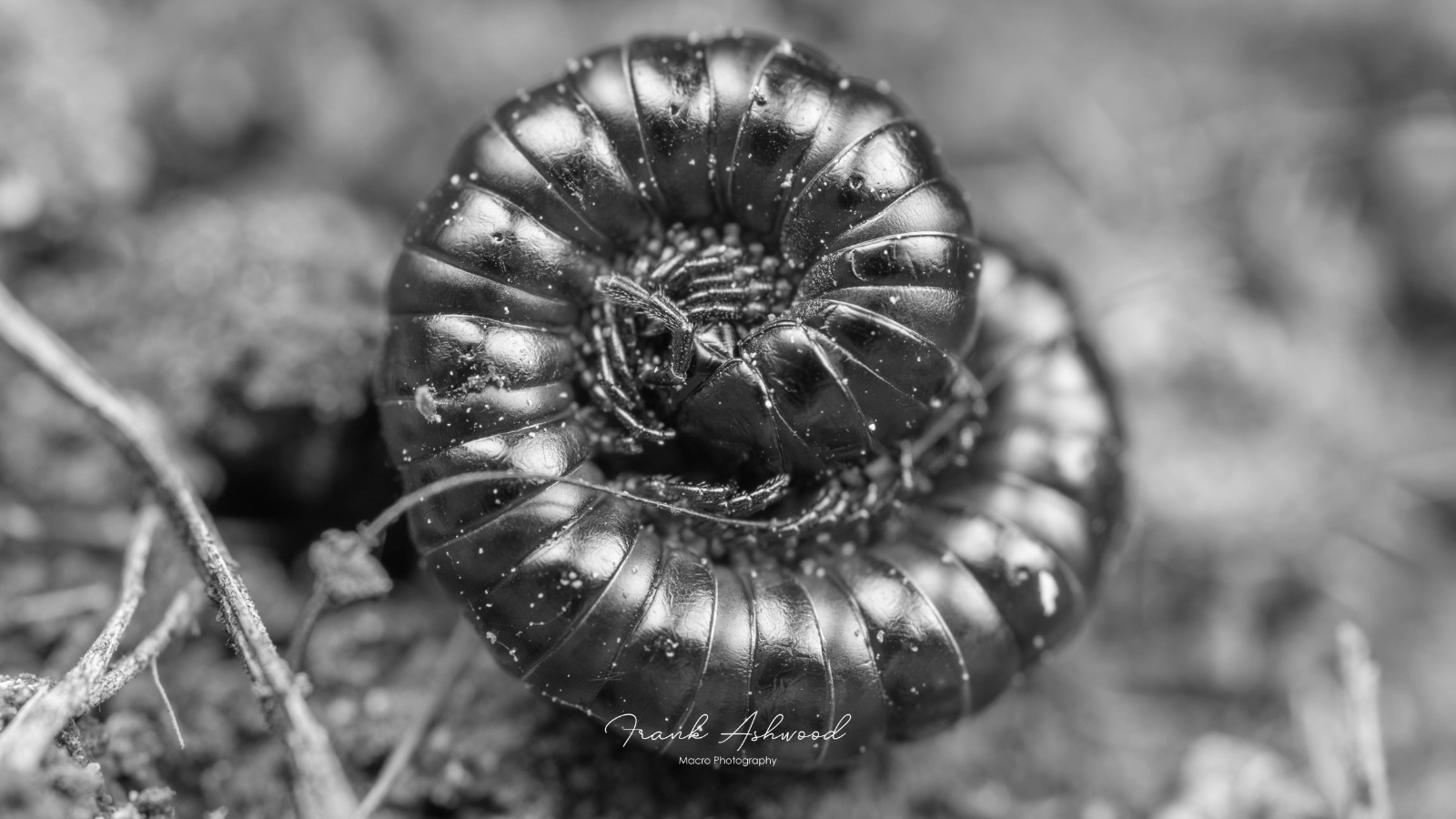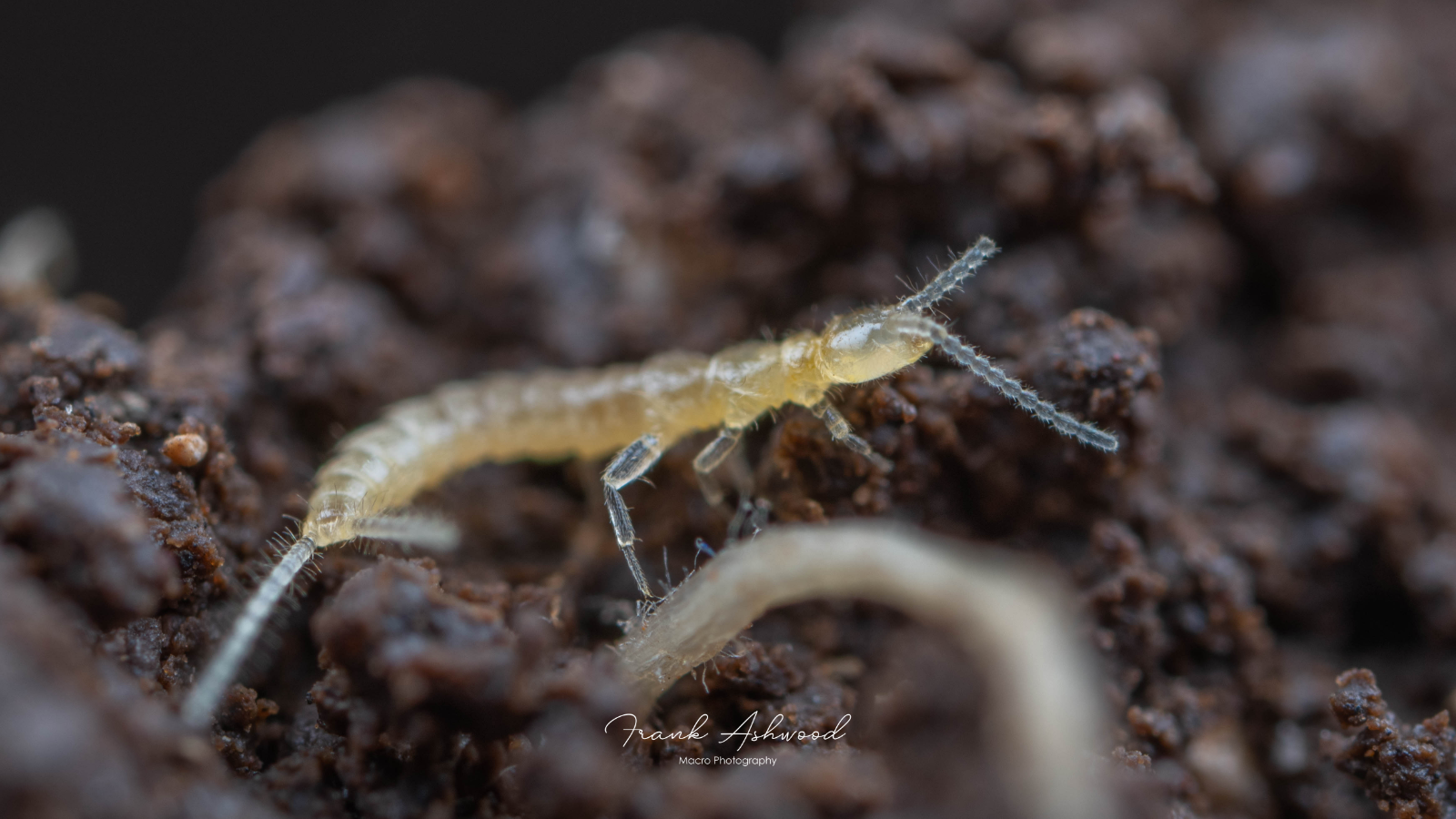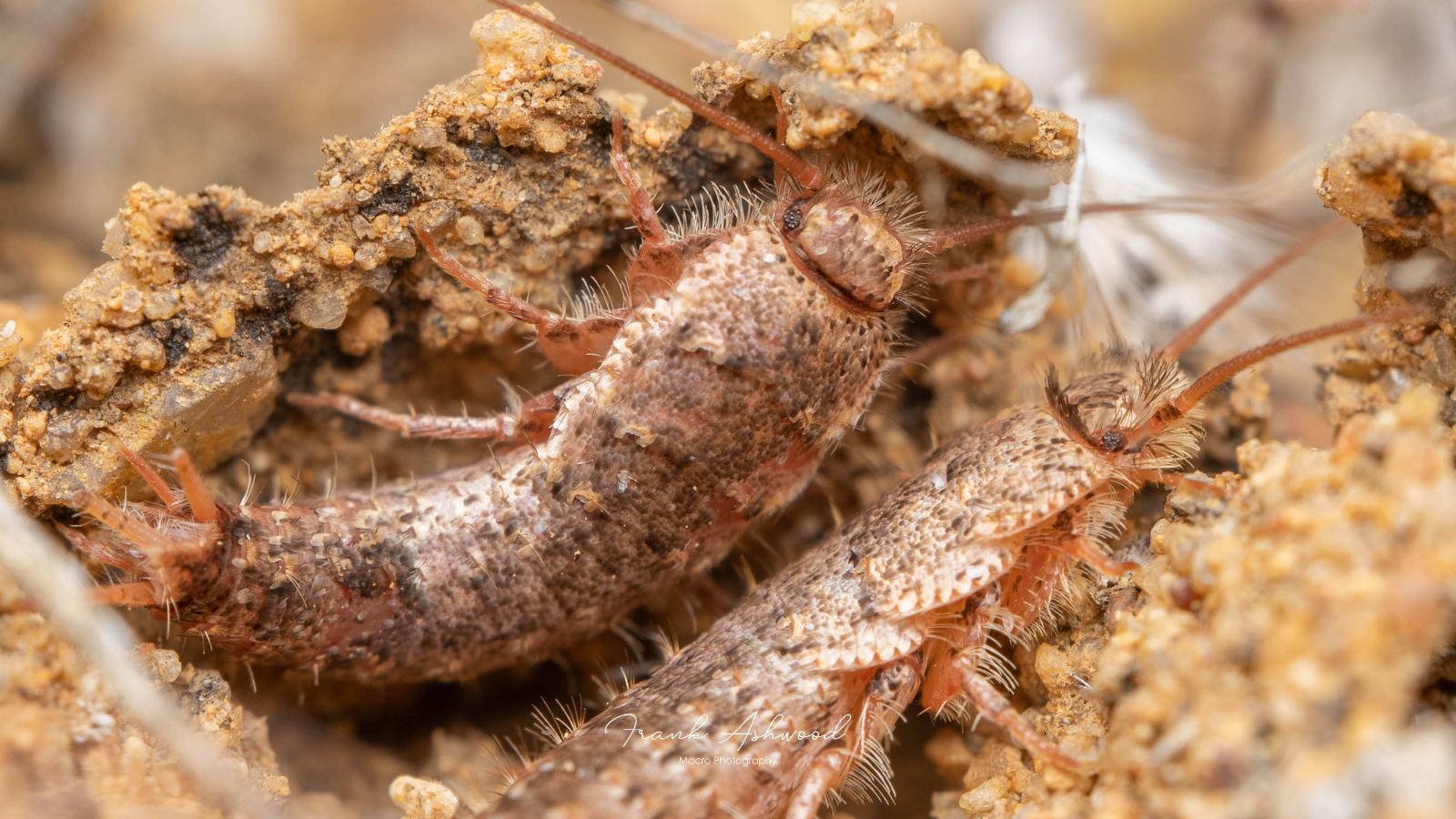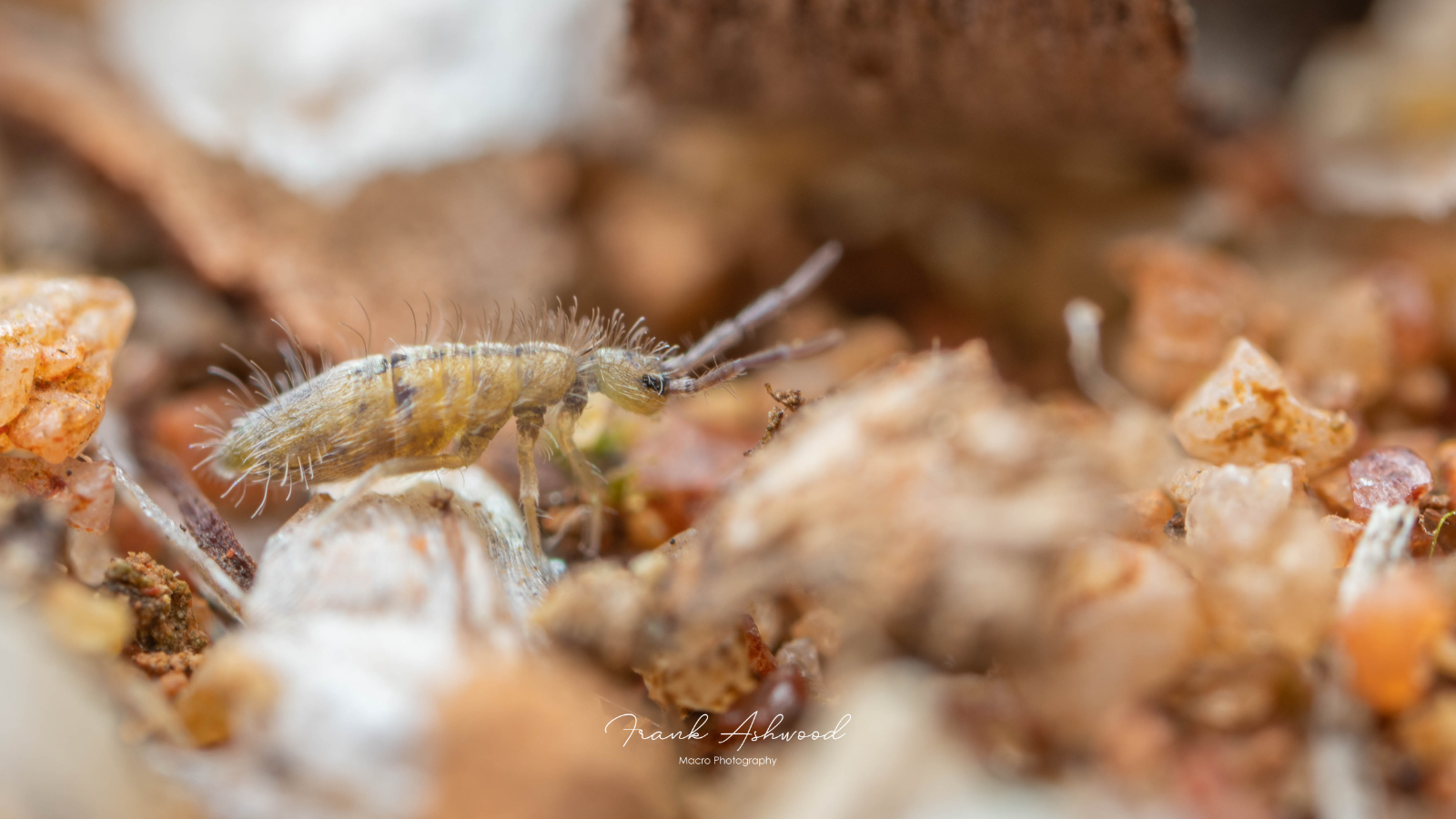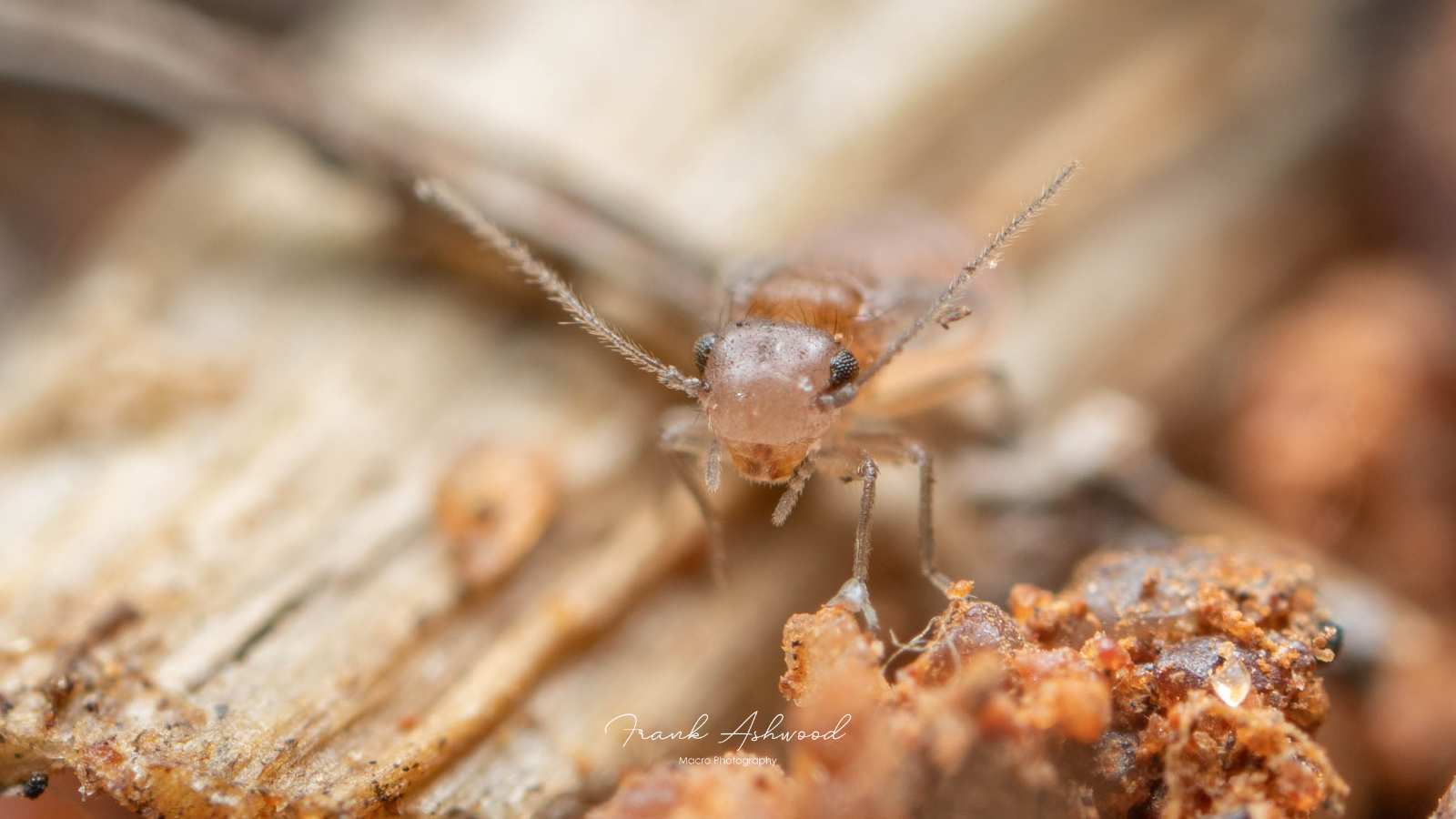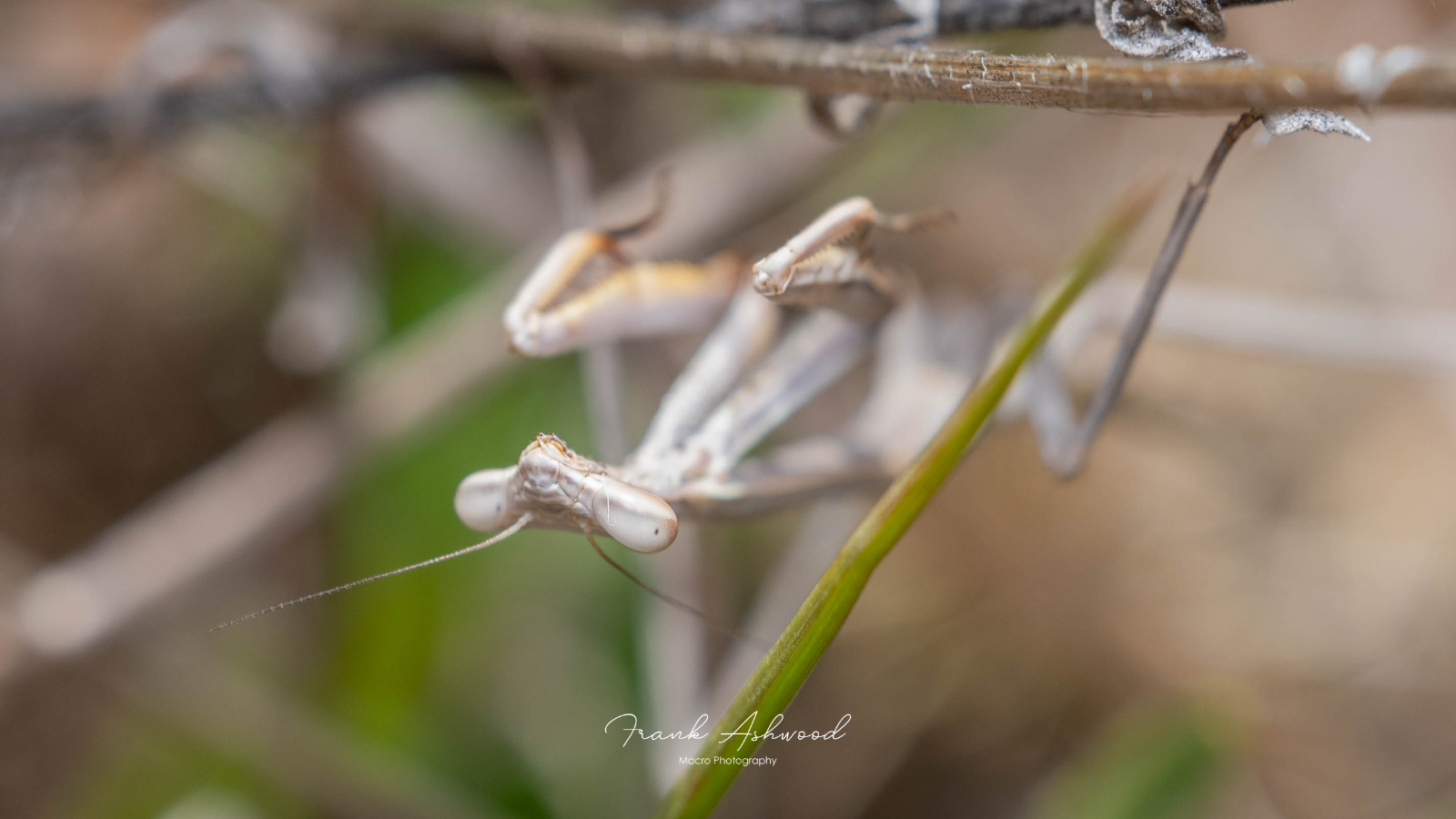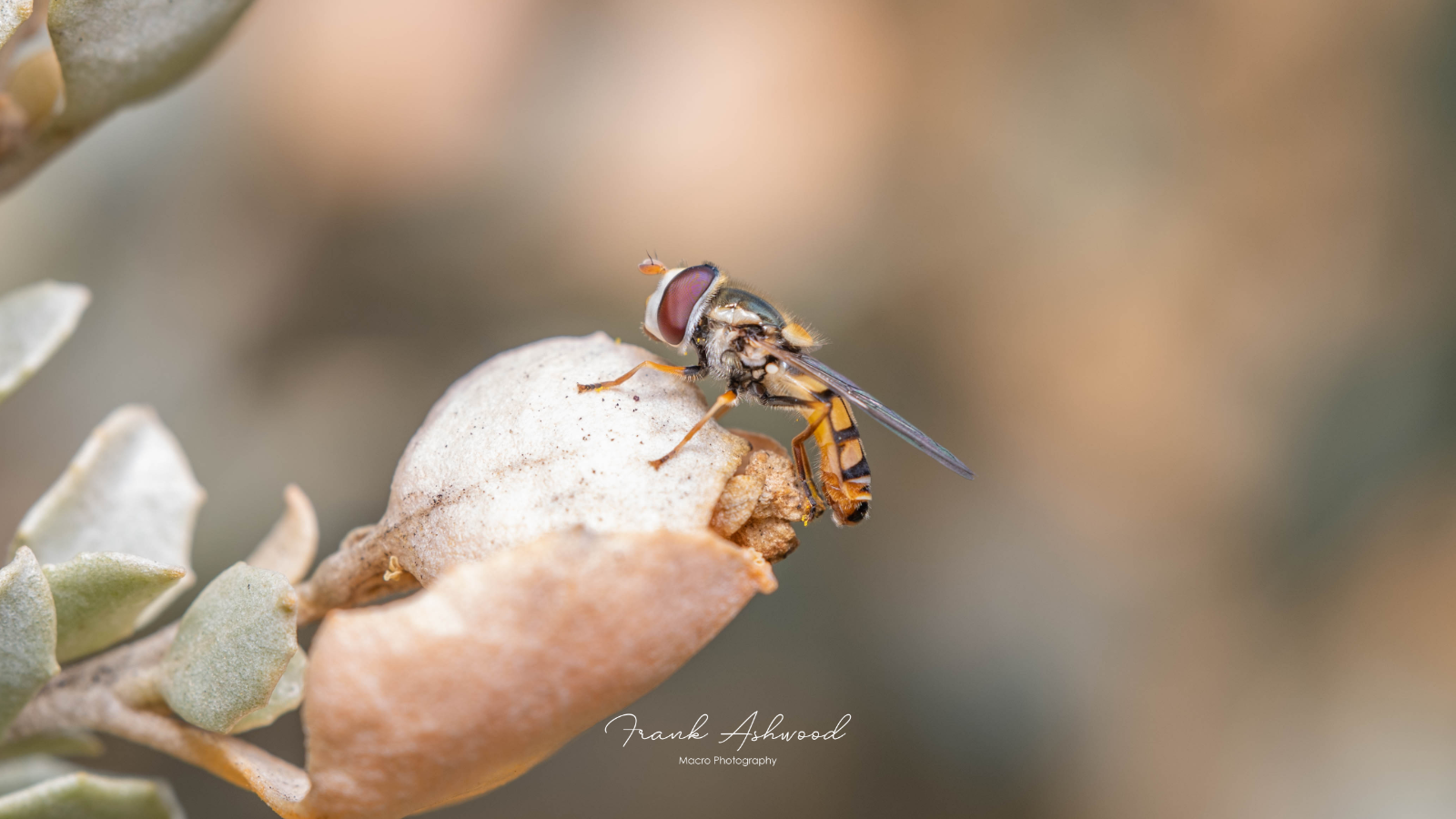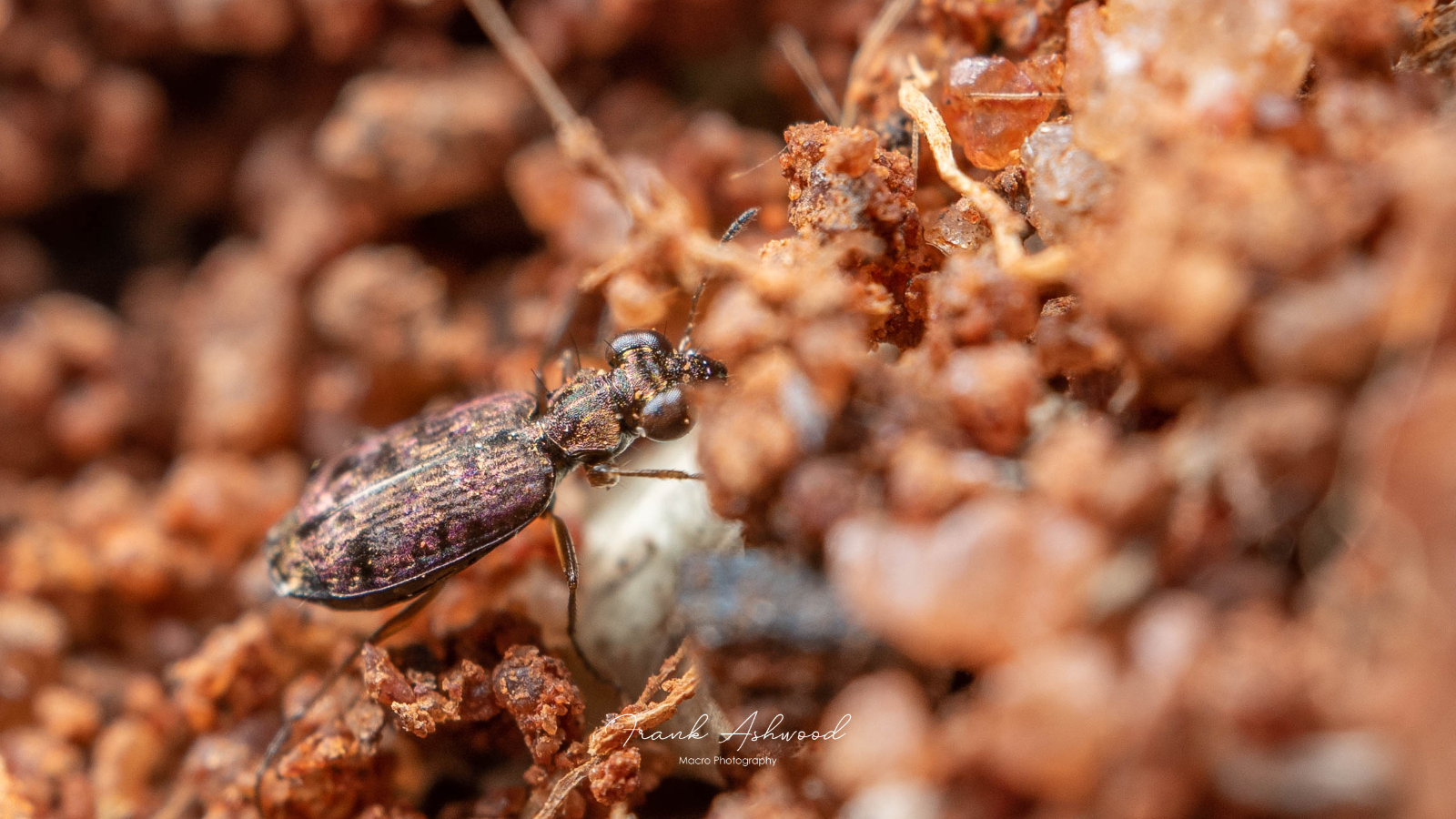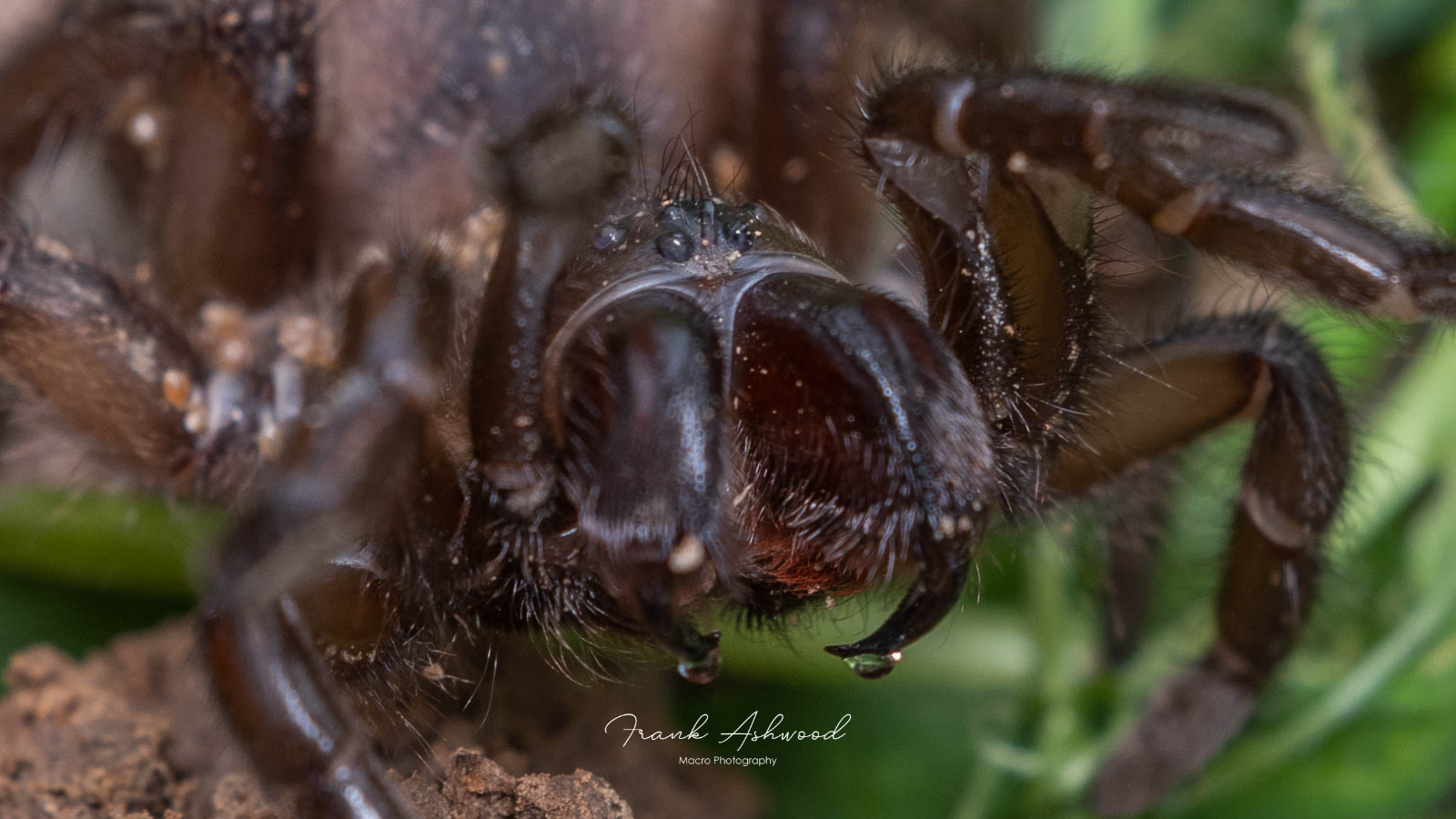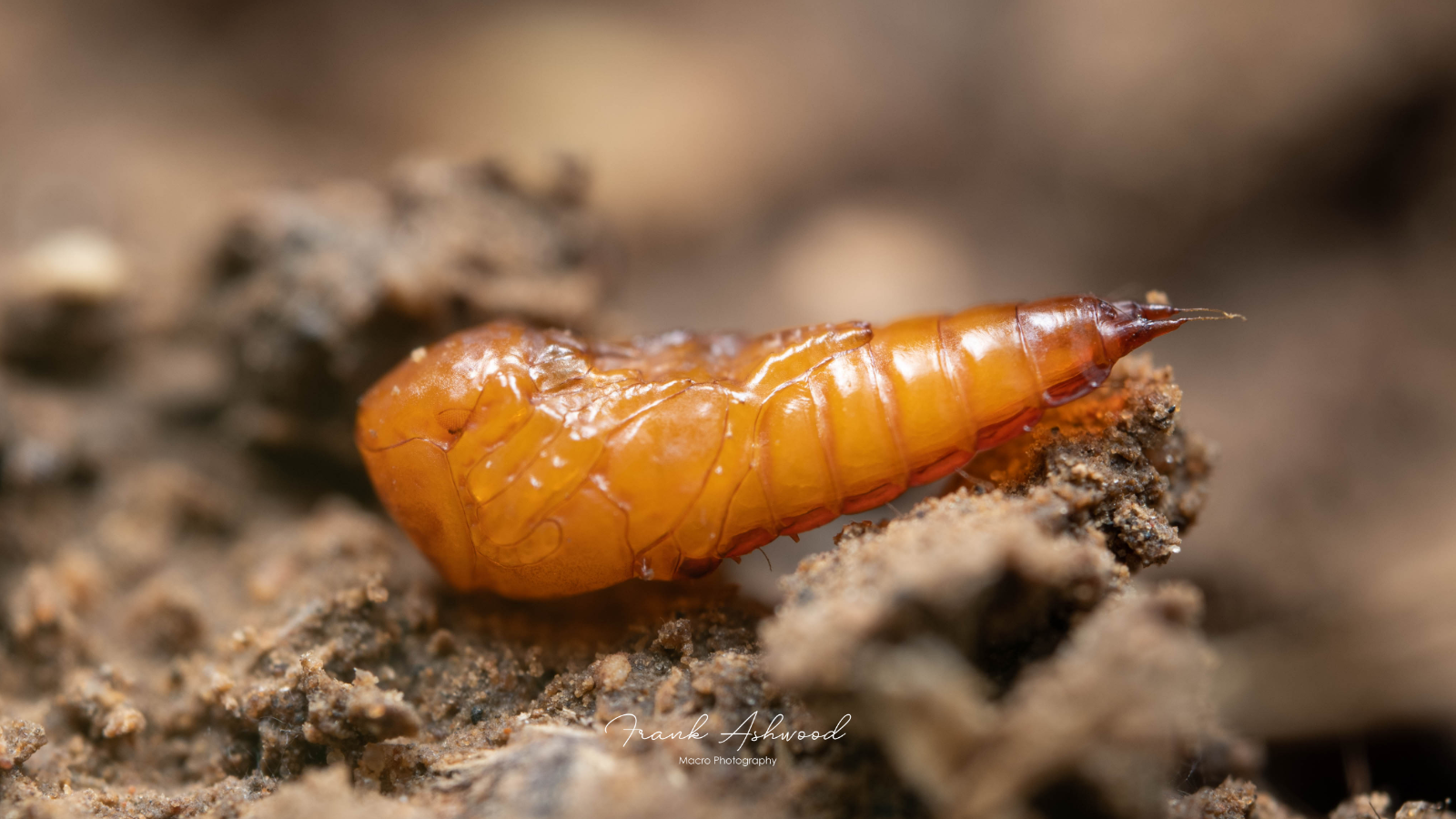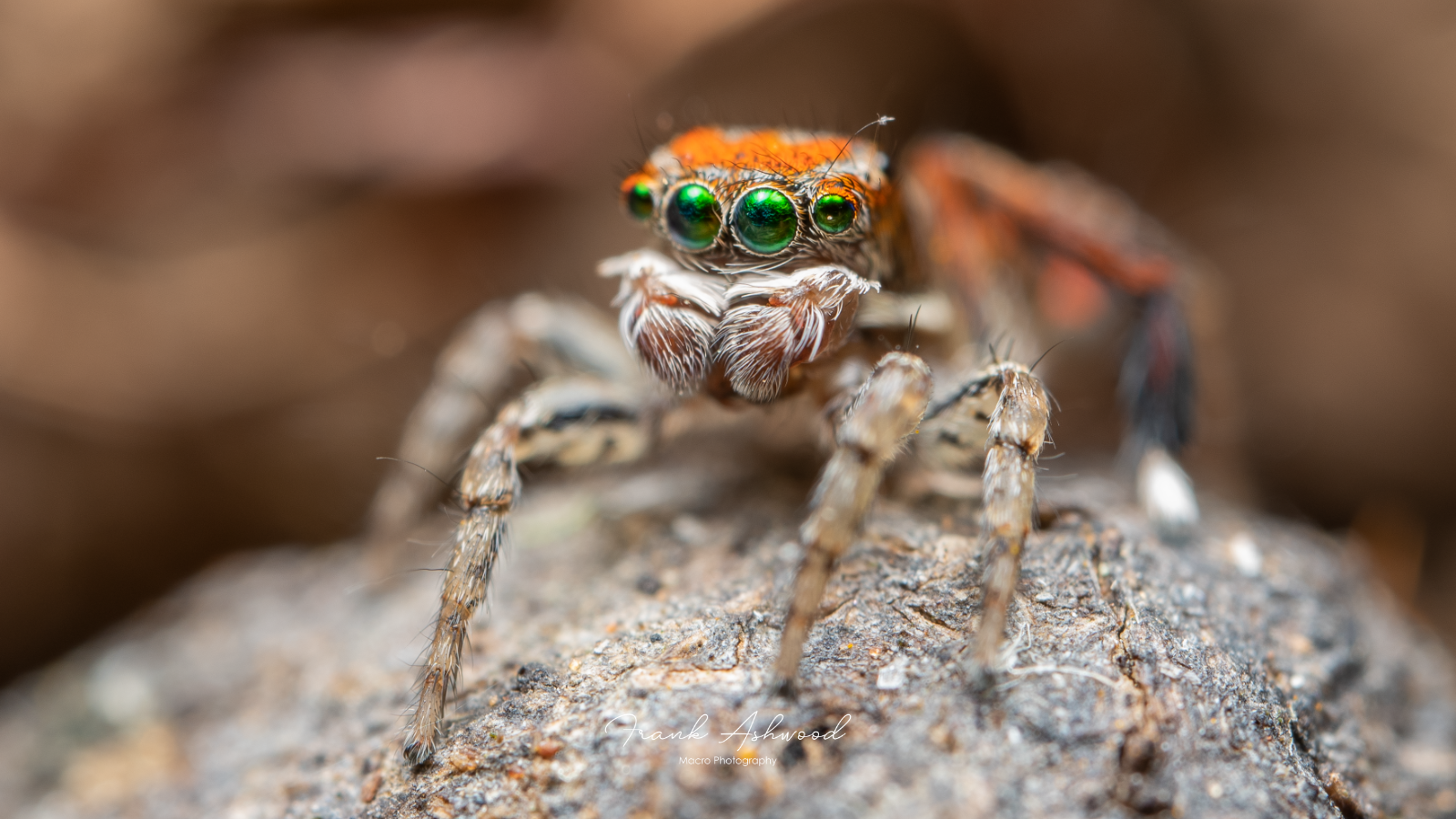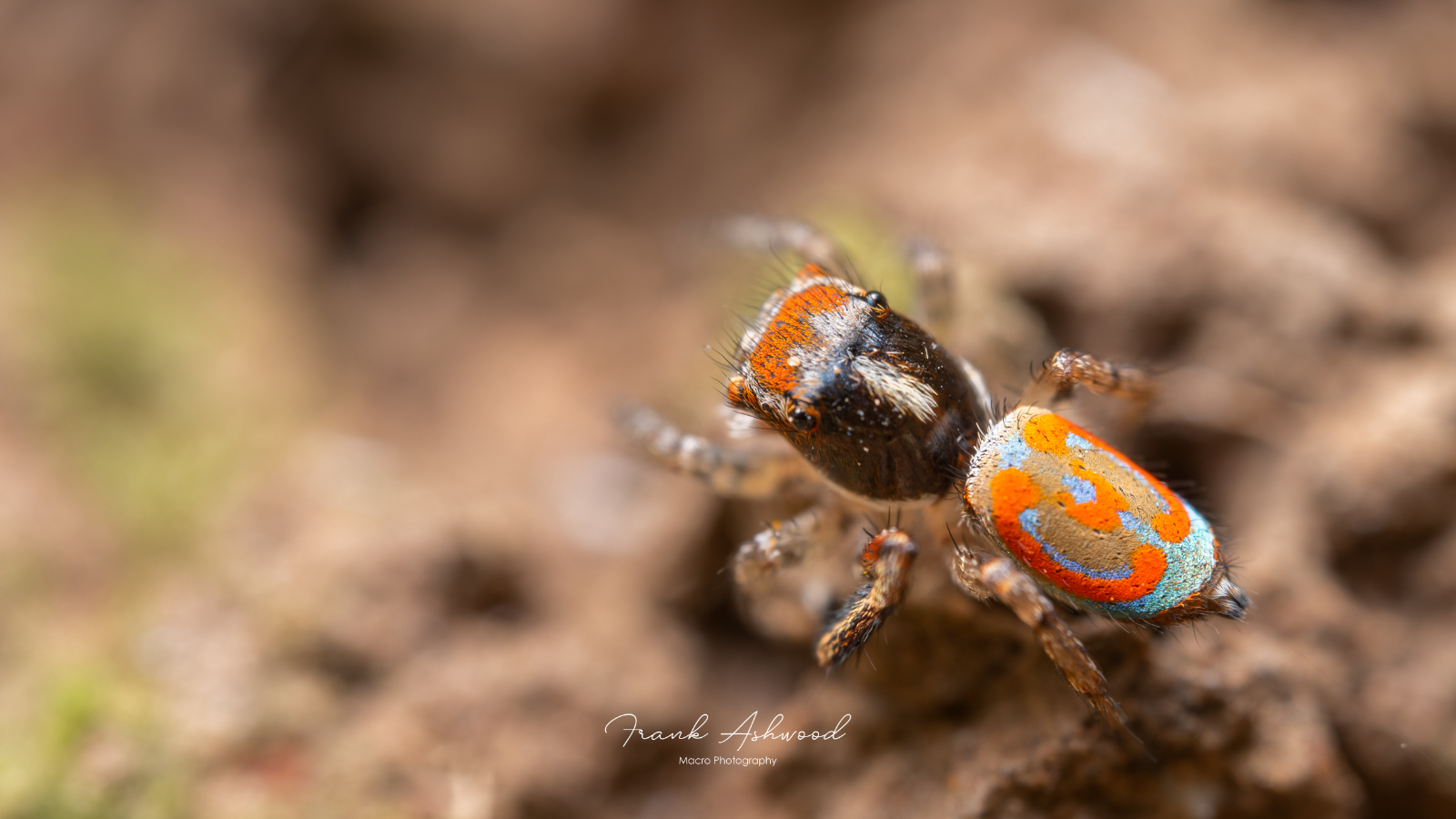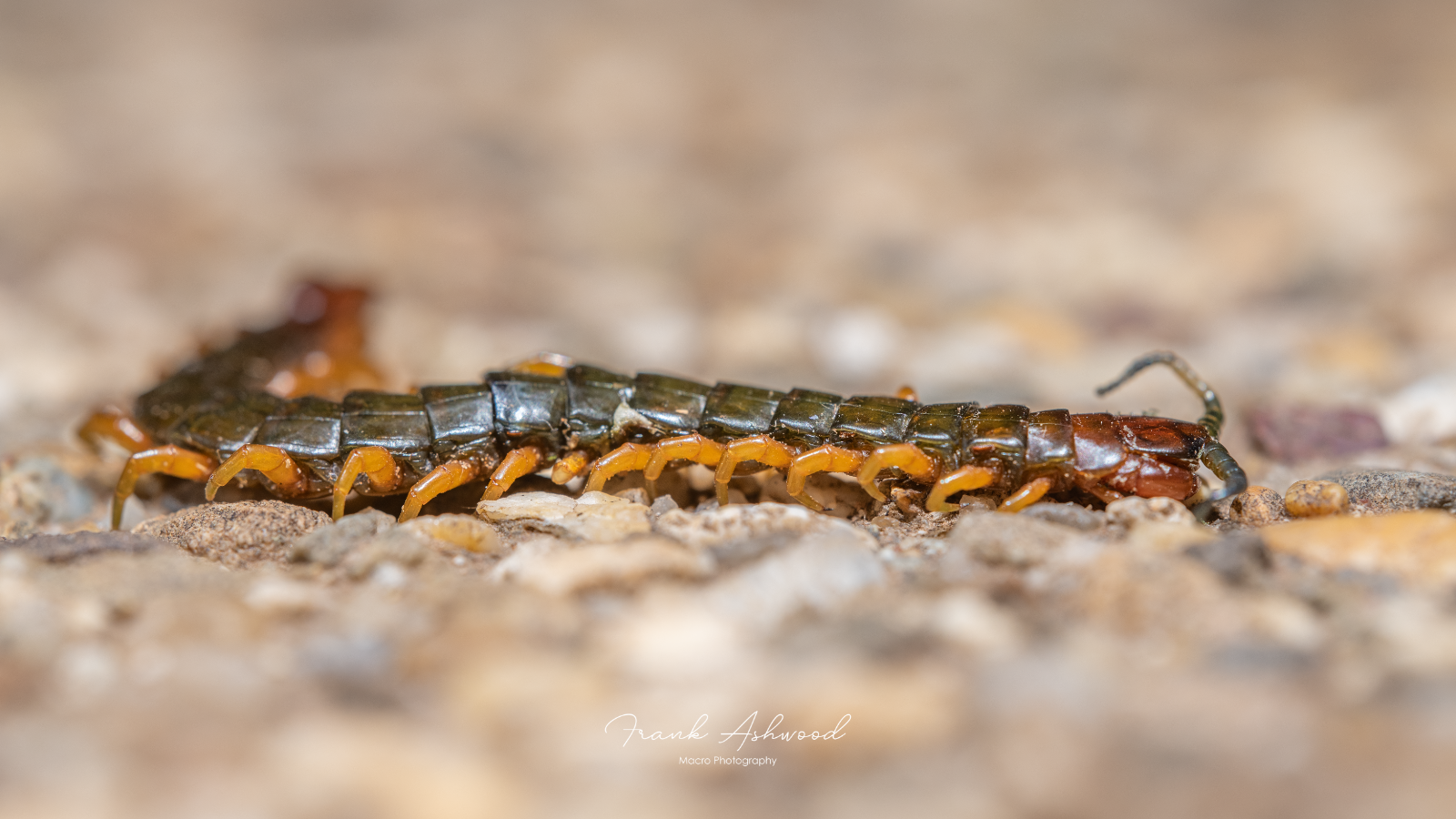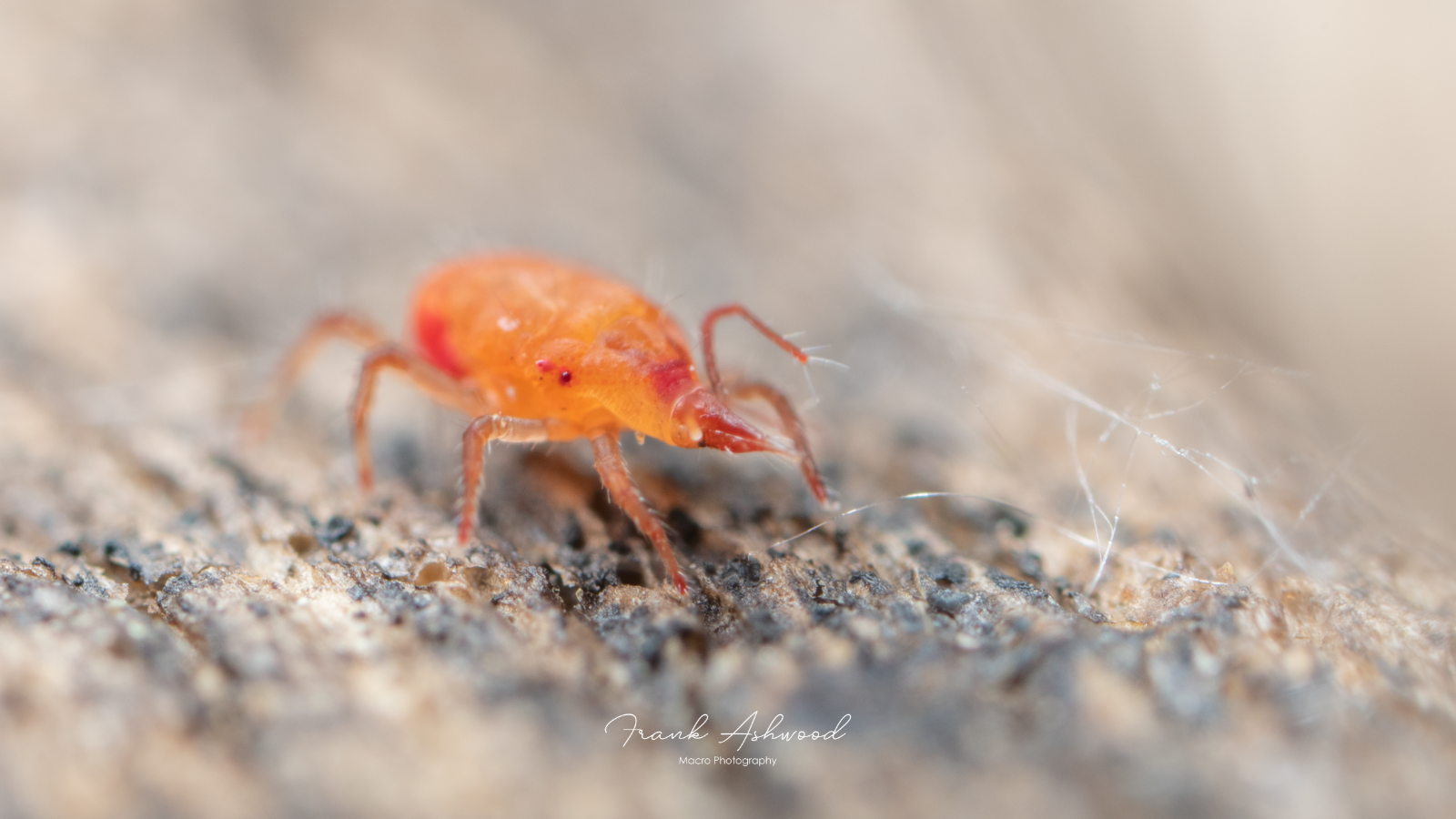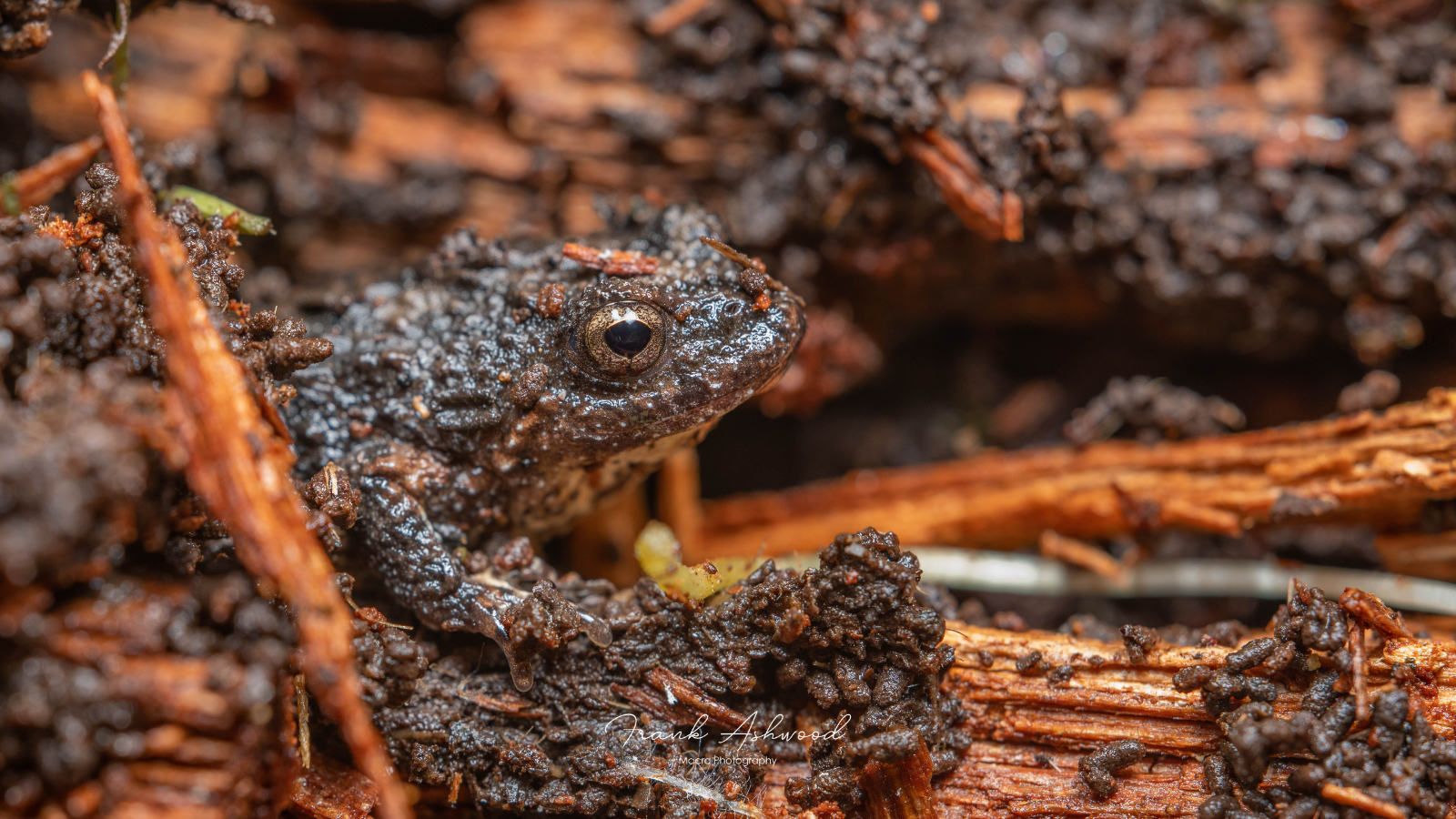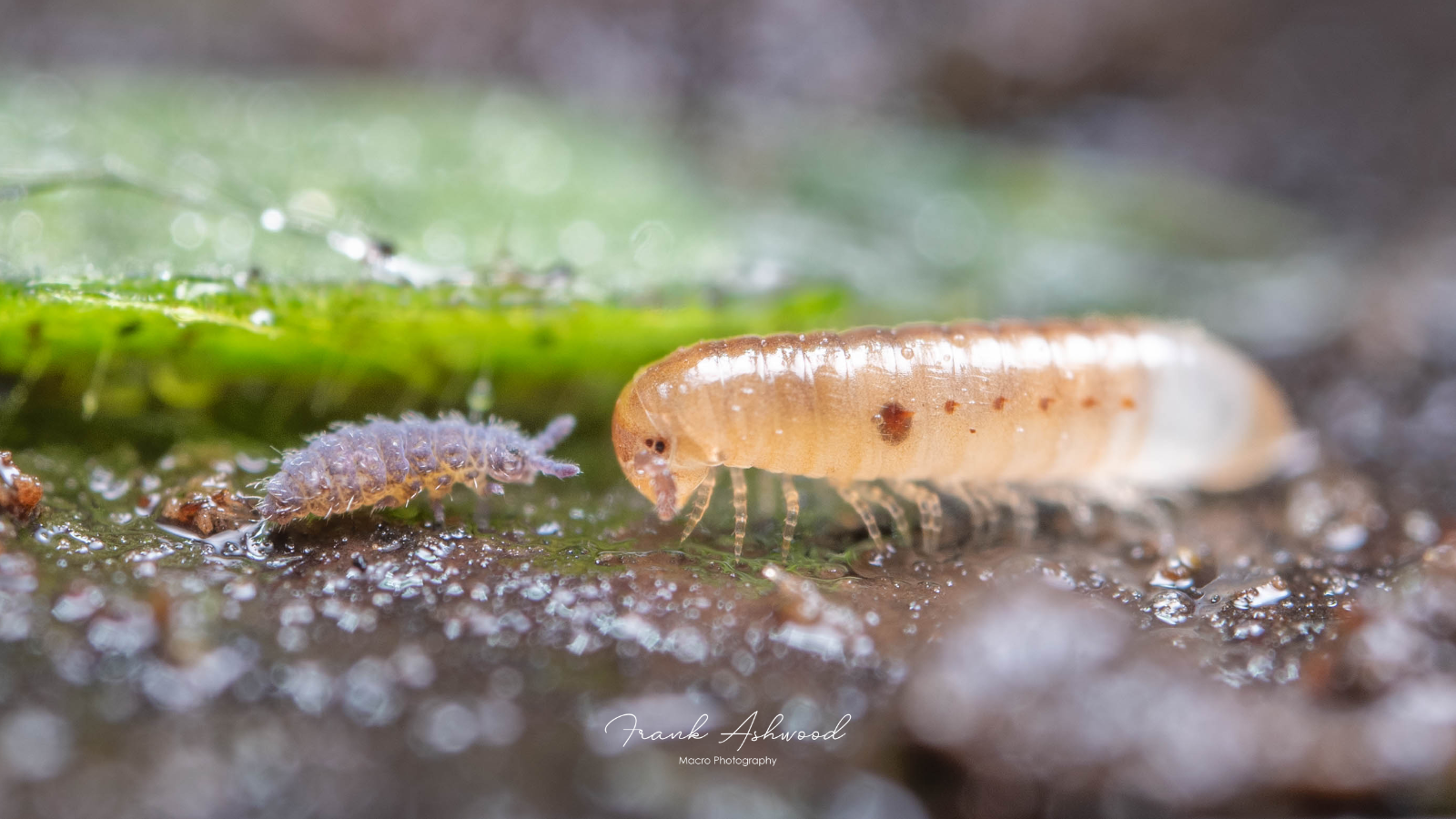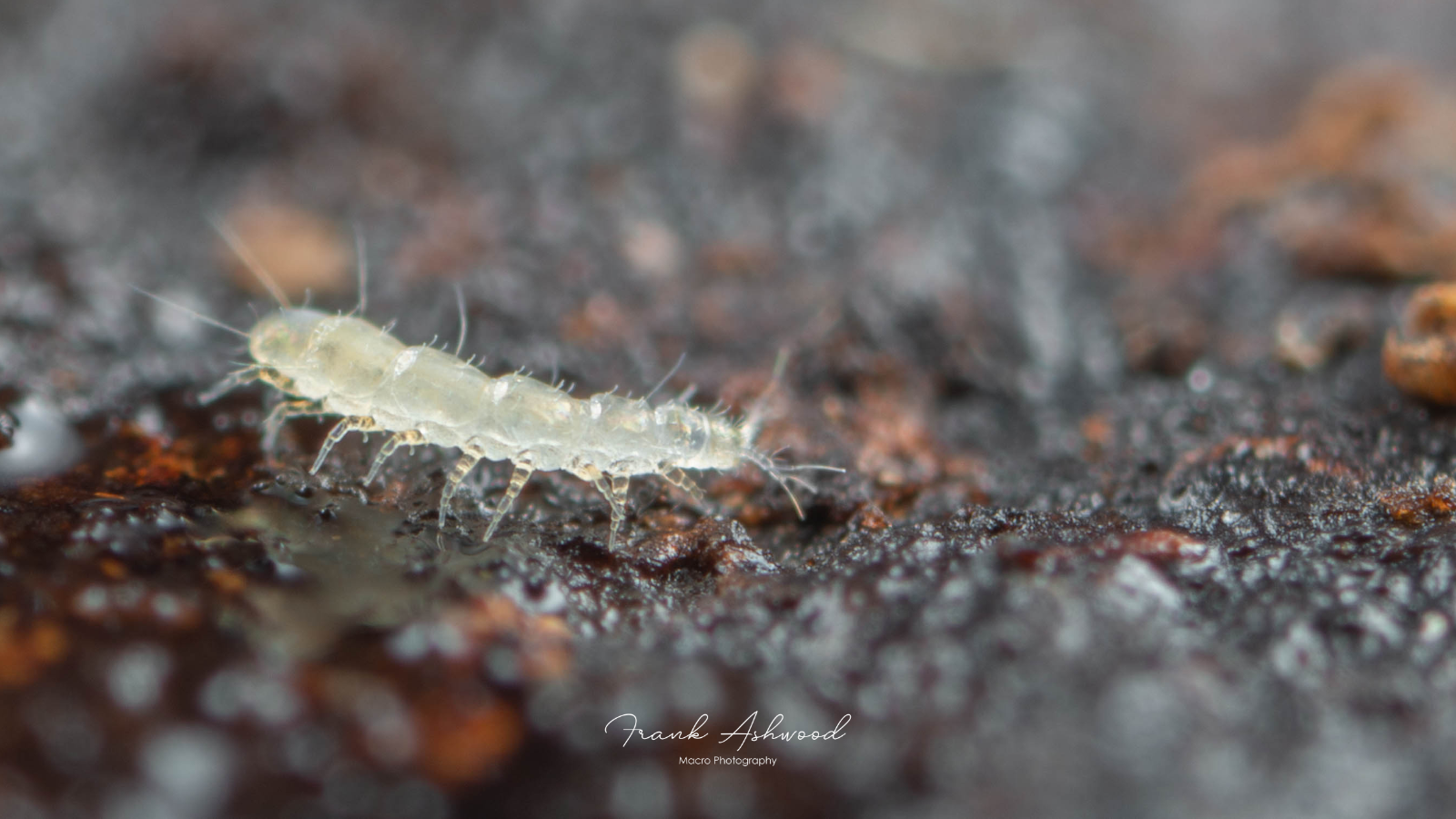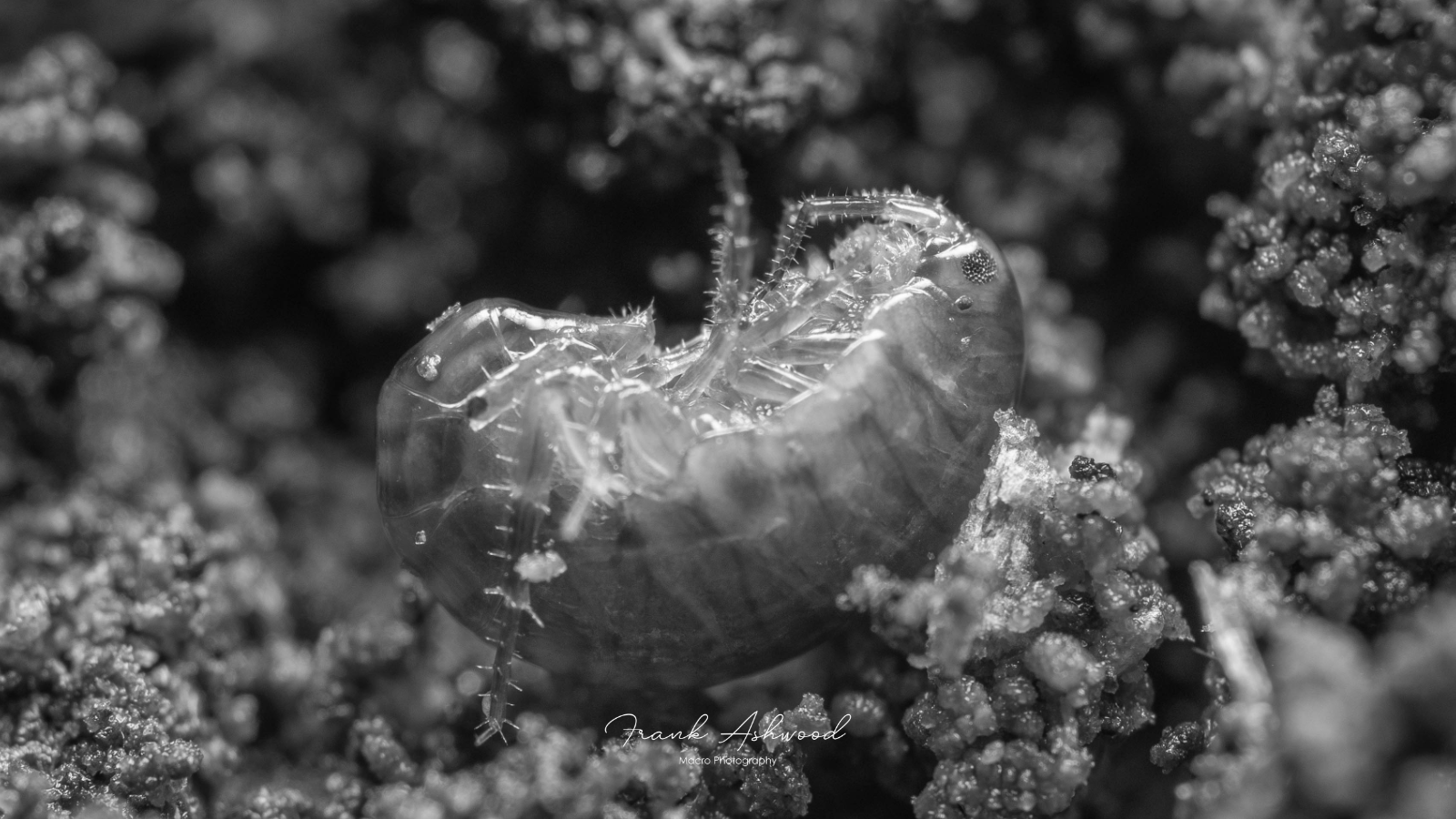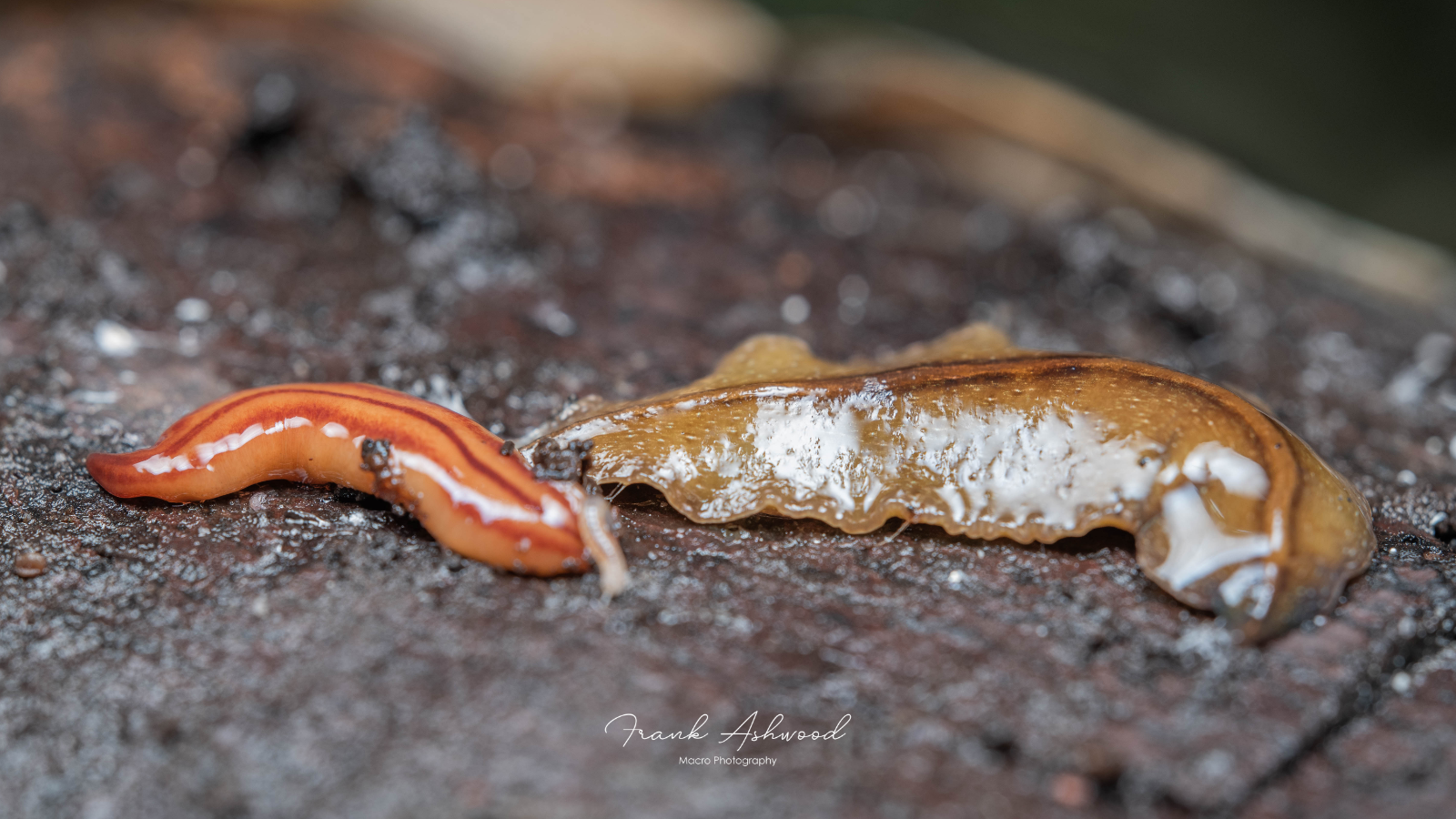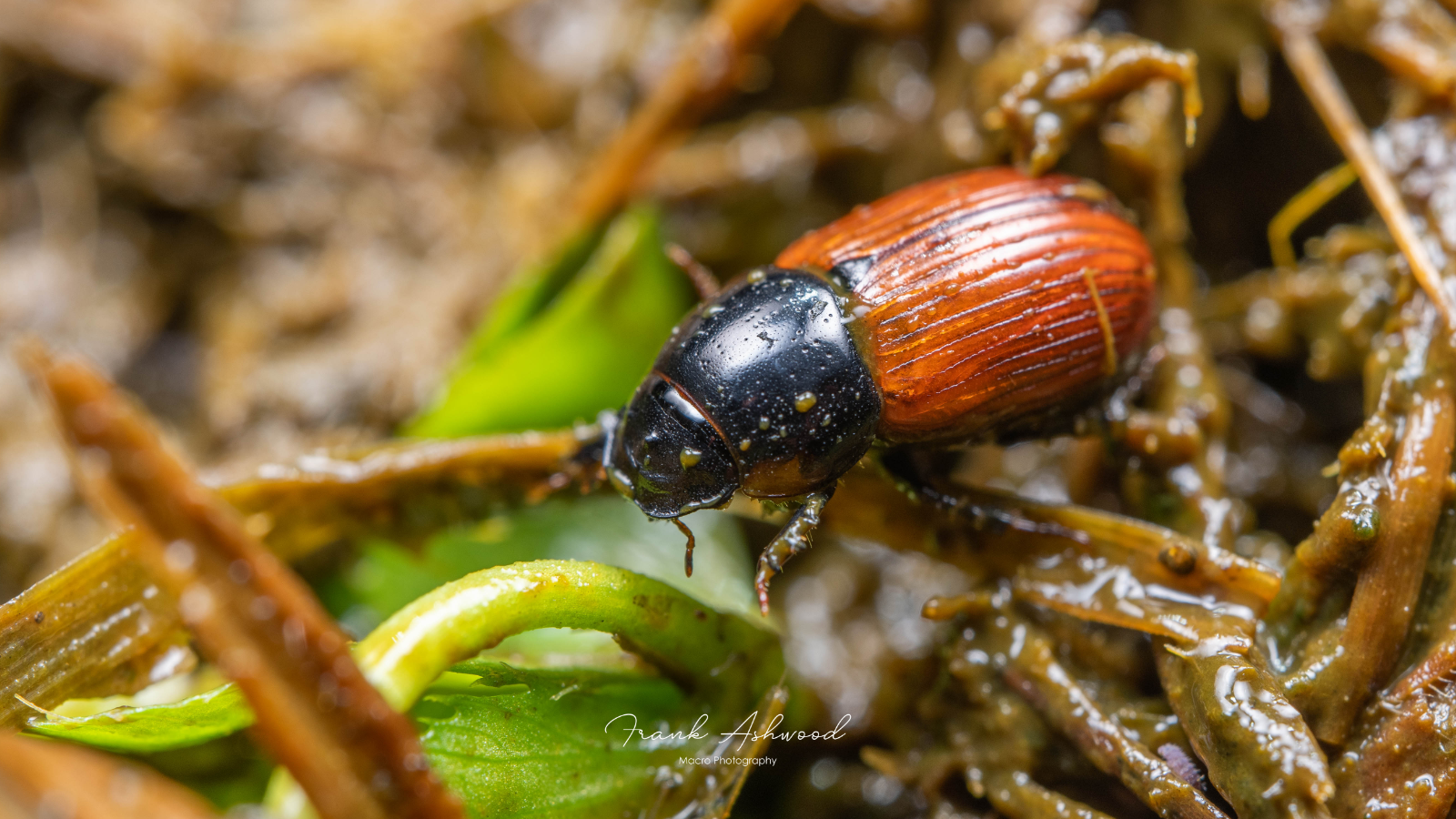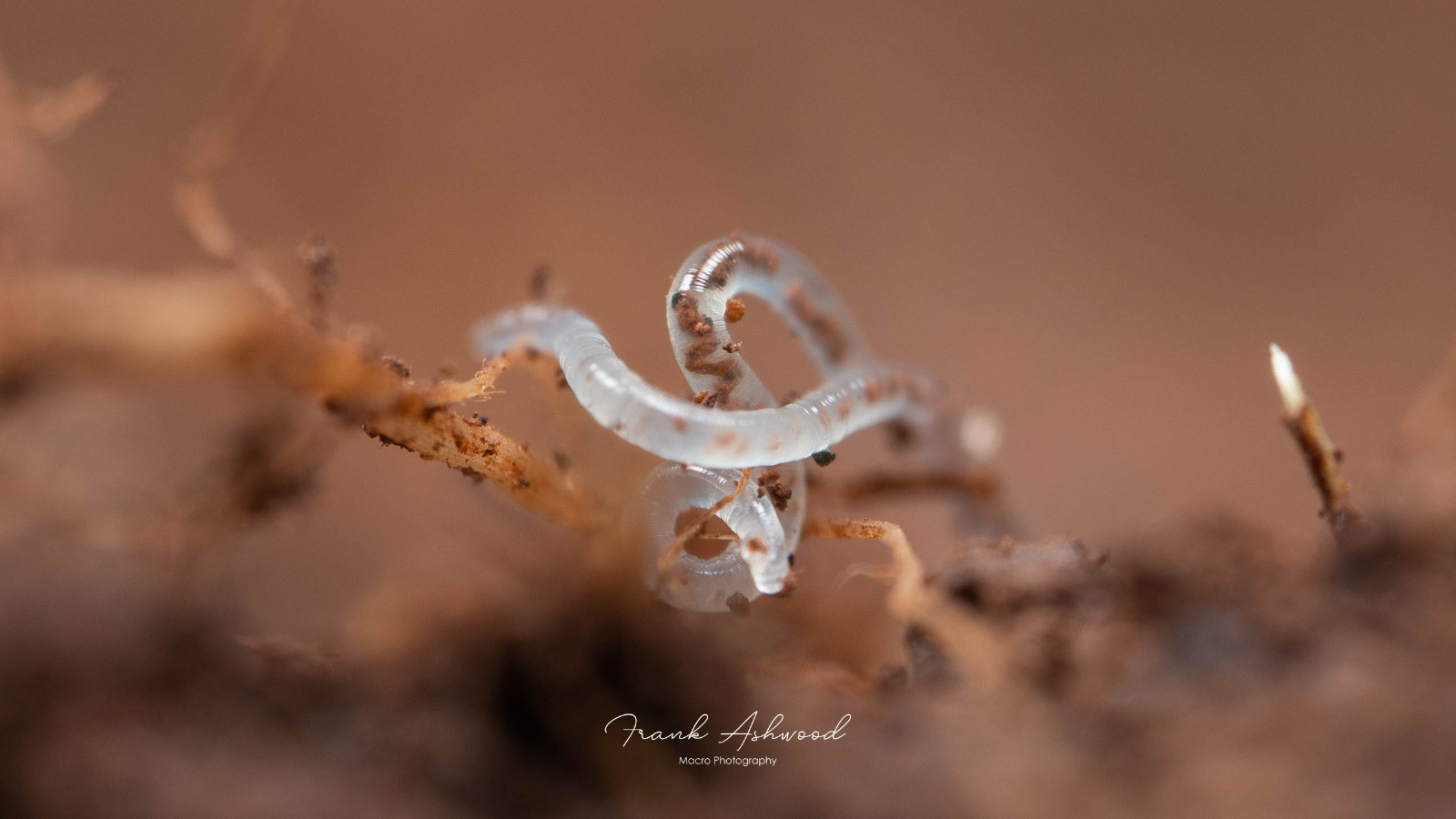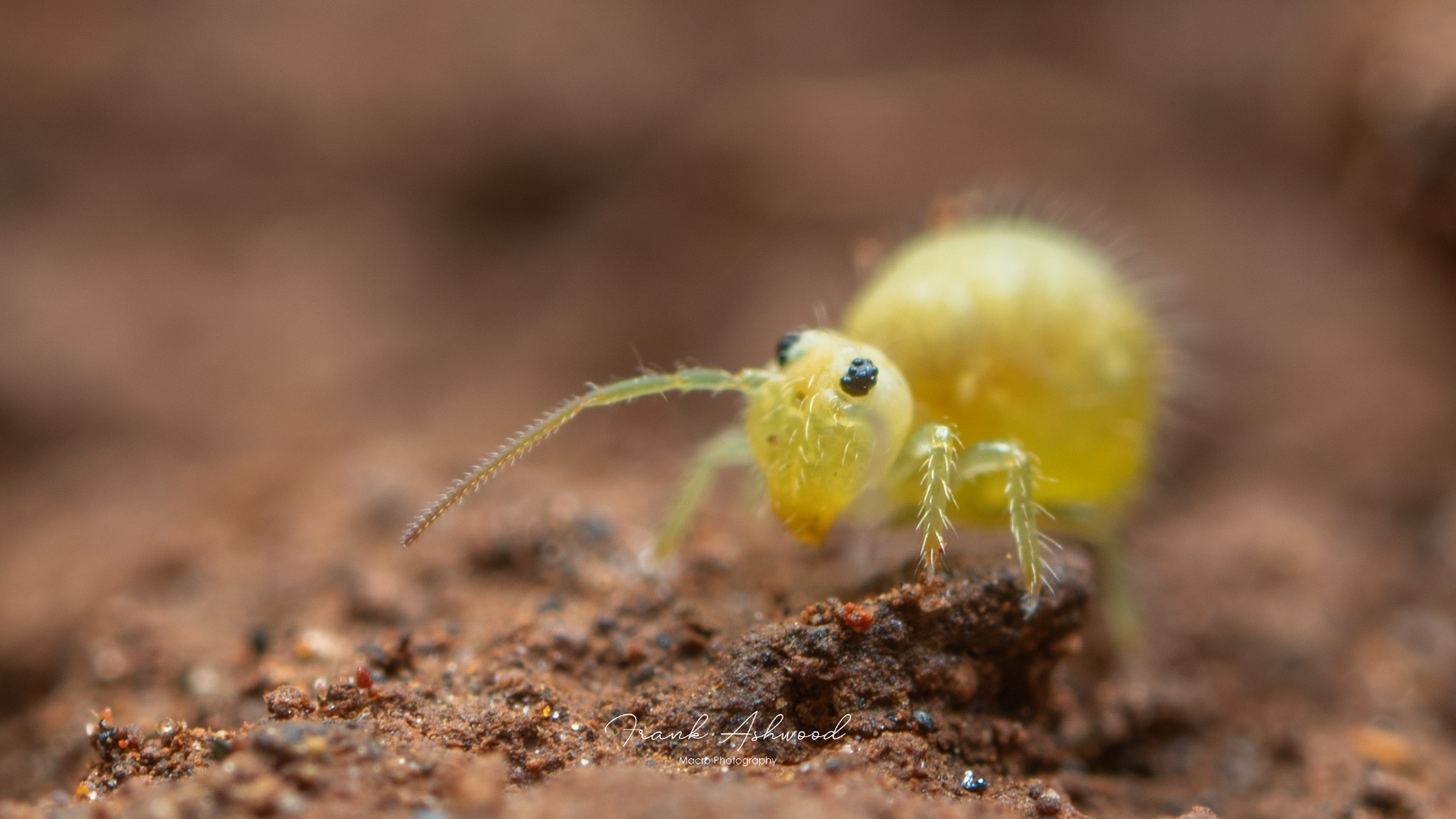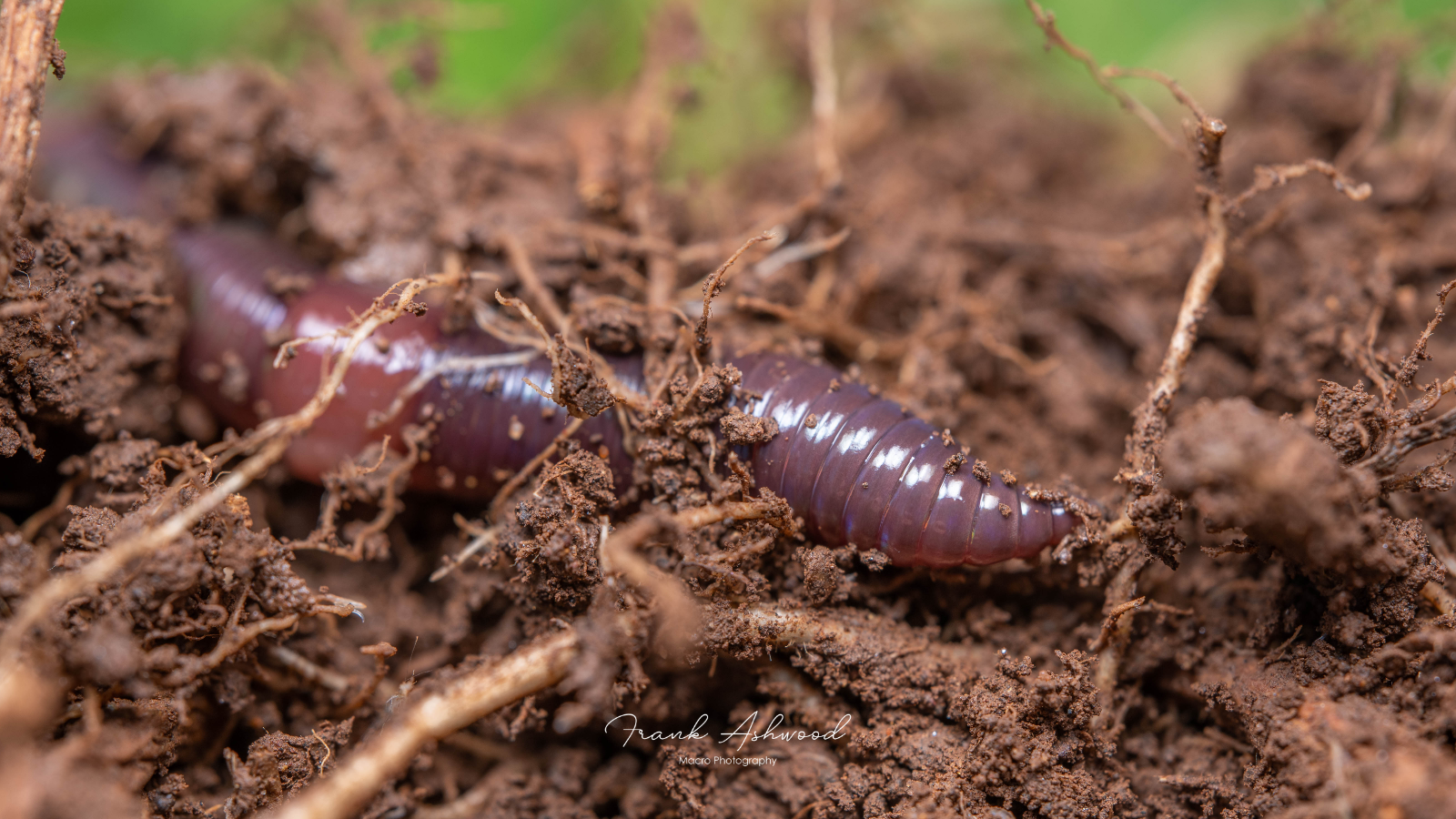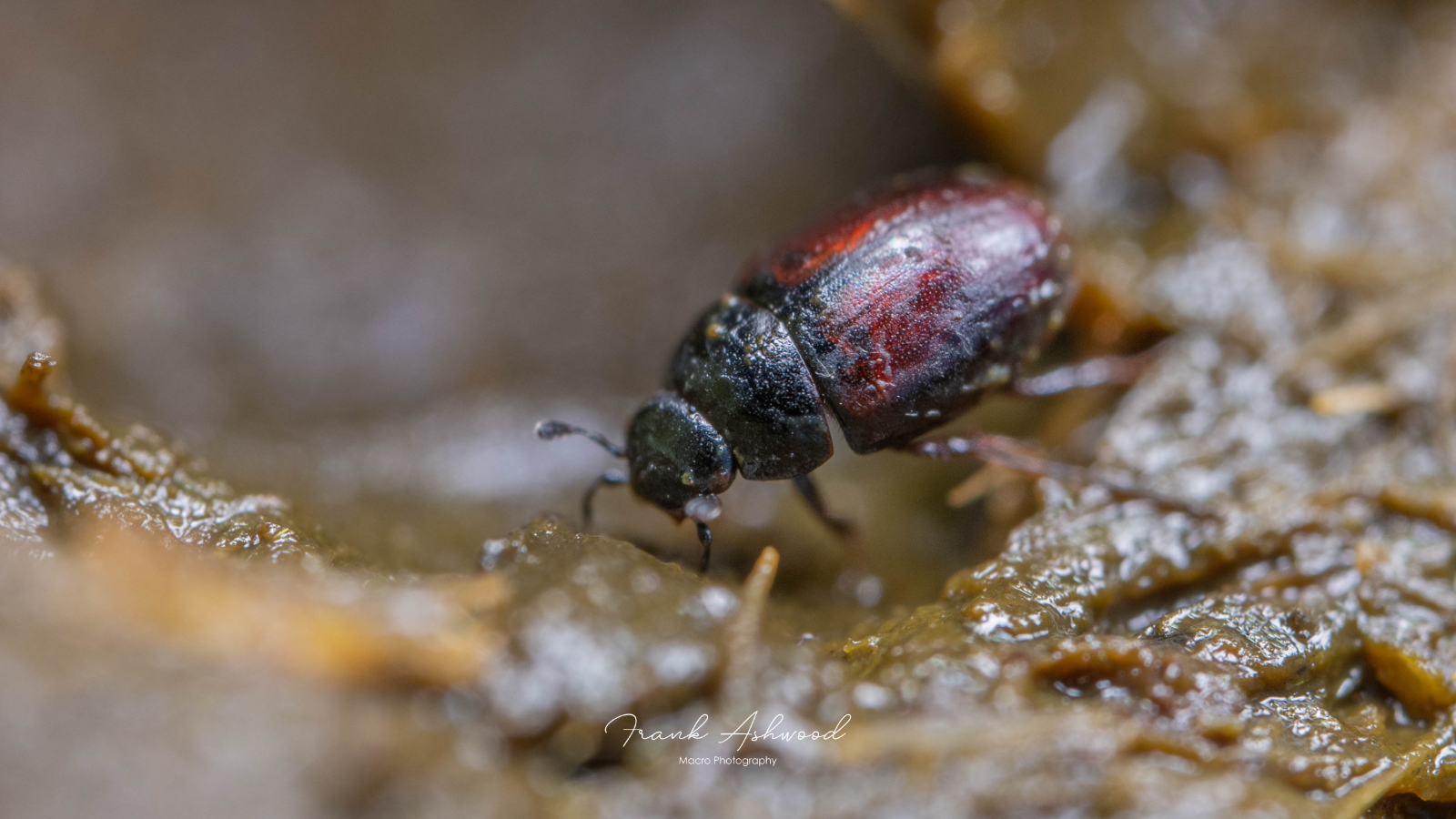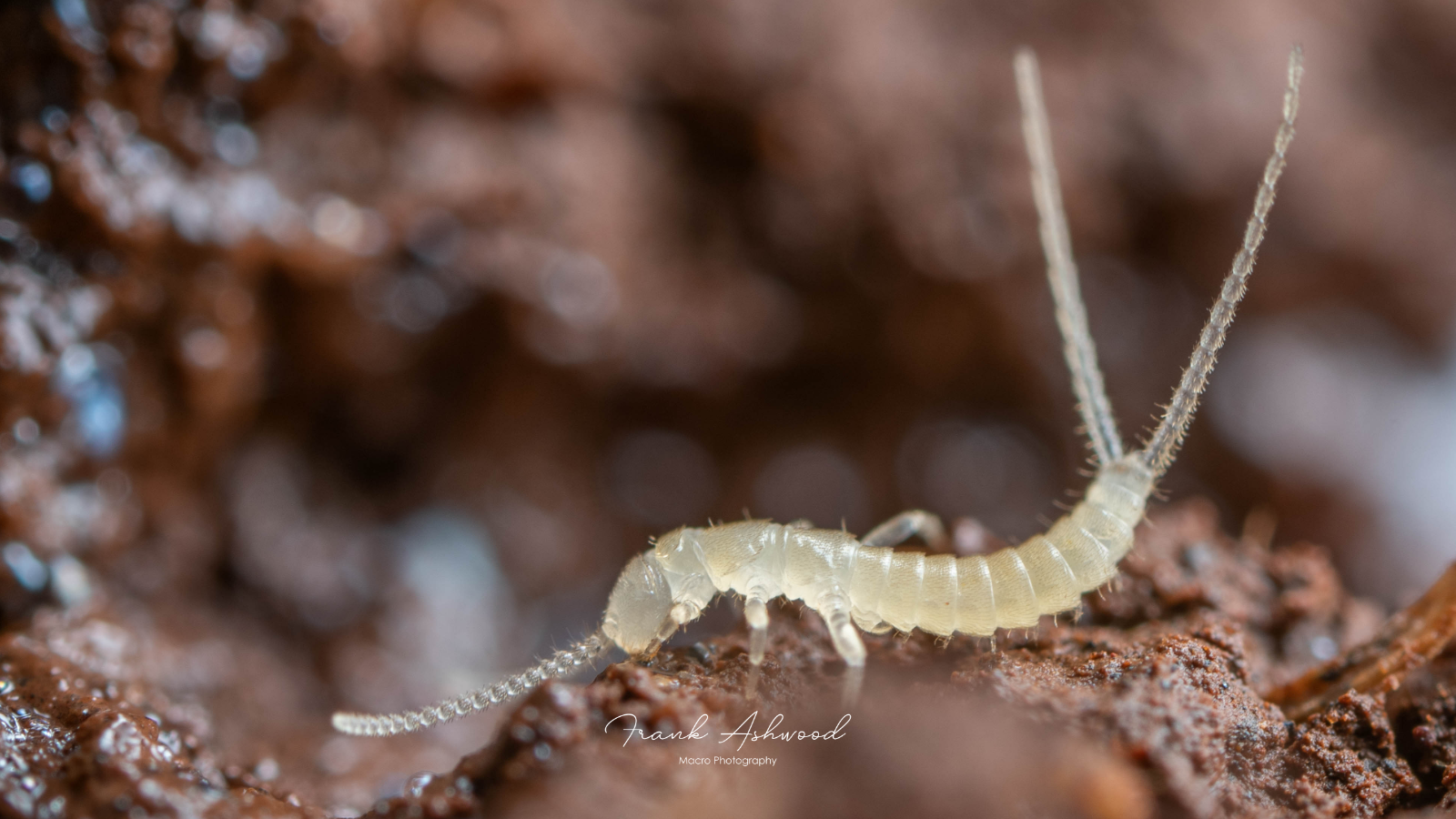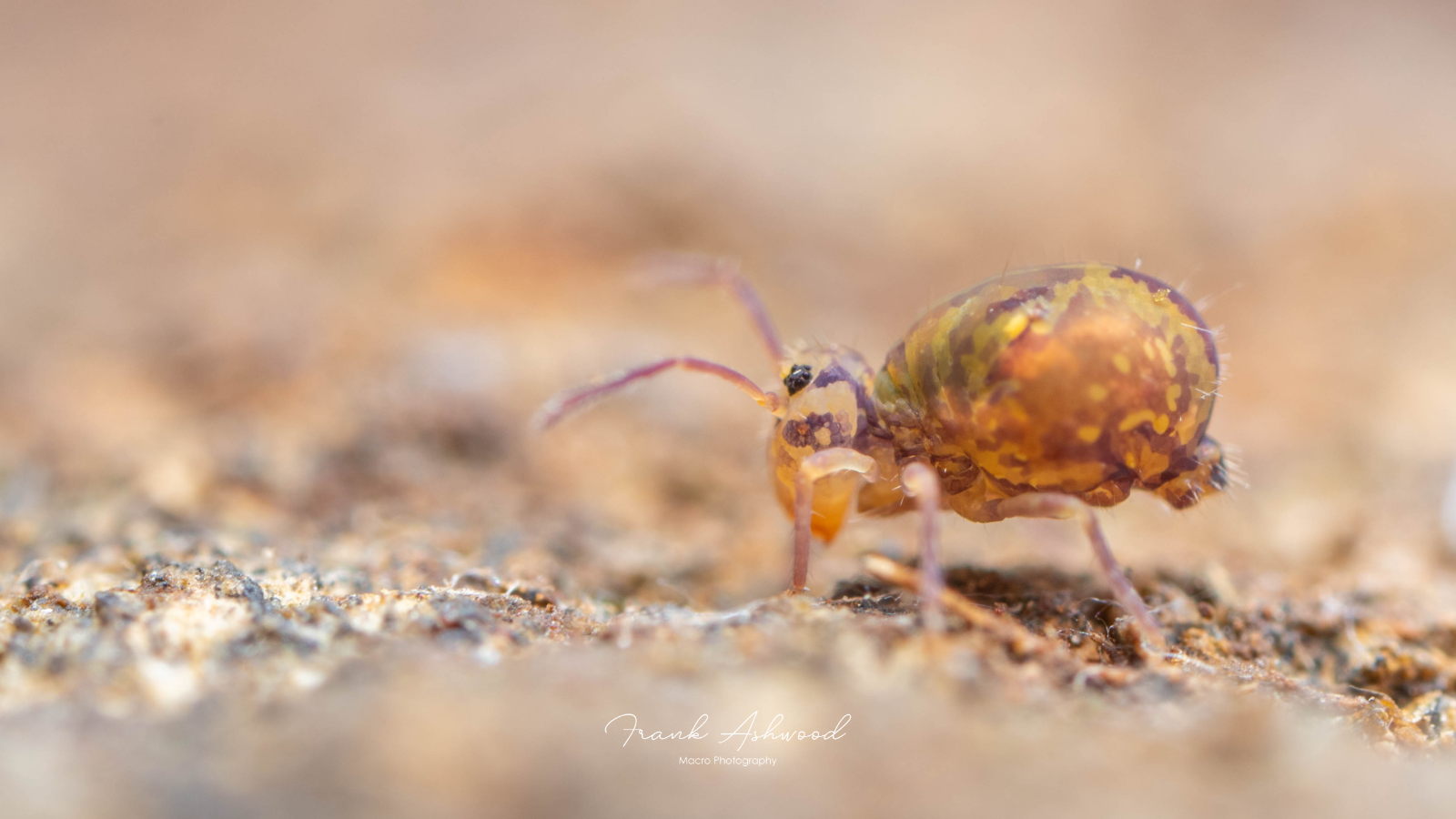Soil biologist and macro photographer looks at soil life on regenerative farms
Frank Ashwood tours Australian regenerative farms | Published November 2023
British macro-photographer and soil biologist Frank Ashwood toured six regeneratively managed farms around Australia. He brought along his macro lens to see what he could find in the soil, and we were all delightfully surprised. Mites, springtails, slugs, spiders millipedes and flatworms all brought into magnificent large scale. Frank’s photos capture the beauty and complexity of life below the ground. Check out his previous work at www.frankashwood.com
We loved hearing from Frank about each creature, their function in the soil, and their critical roles in maintaining a healthy ecosystem! We know that soil biology is critical for healthy, functioning soil. These photos of the soil biology of regenerative farms gave farmers a direct connection to the soil life they are nurturing.
Thank you to the farmers in six regions across the country who participated in this tour, and who so graciously hosted Frank and our team at their homes.
Gleneden Family Farm
Rohan & Fiona Morris
Maryvale, QLD
glenedenfamilyfarm.com.au
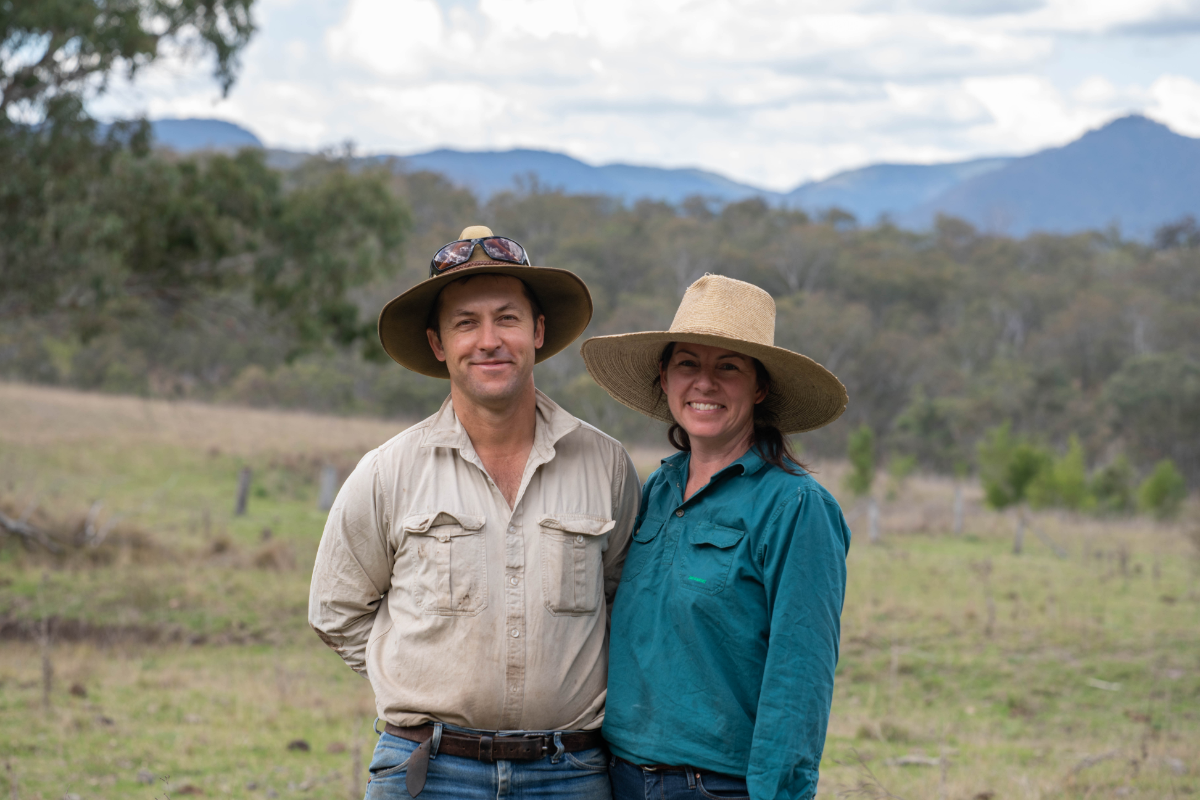
Rohan and Fiona, Eden and Jethro Morris farm in the western foothills of the great dividing range, south east Queensland. Under the philosophy of ‘Ethical Farming” they work to grow healthy food for their family and local community, from healthy plants and animals, from healthy soil, in a healthy landscape.
Guided by principles of holistic management, organic, and regenerative farming they operate a mixed enterprise of cattle, sheep, pigs, and poultry on native and no-till multispecies pastures. Ruminants are 100% pasture fed, omnivores are supplemented with organic stock feed. They are working to rehydrate and revegetate the landscape with Natural Sequence Farming methods, creating chains of ponds from old drainage ‘contour’ banks, building swales across the landscape, leaky dams in gullies and creeks and fencing, fencing, fencing.
During his visit, Frank and the Morrises got out into the paddocks, starting in the forest high in the landscape, exploring down through the Natural Sequence Farming ponds, and finally landing in the rocky creek which is rapidly revegetating since fencing controlled the grazing.
Bristly millipede (Polyxenida)
Bristly millipedes lack the chemical defences and hard exoskeleton of other millipedes, and instead employ a unique defence mechanism: the distinctive barbed bristles can easily detach and become entangled in the limbs and mouthparts of predatory insects, thus immobilising them.
Life size: 4 mm
Echo Valley Farm
Randal and Juanita Breen
Goomburra, QLD
echovalley.com.au
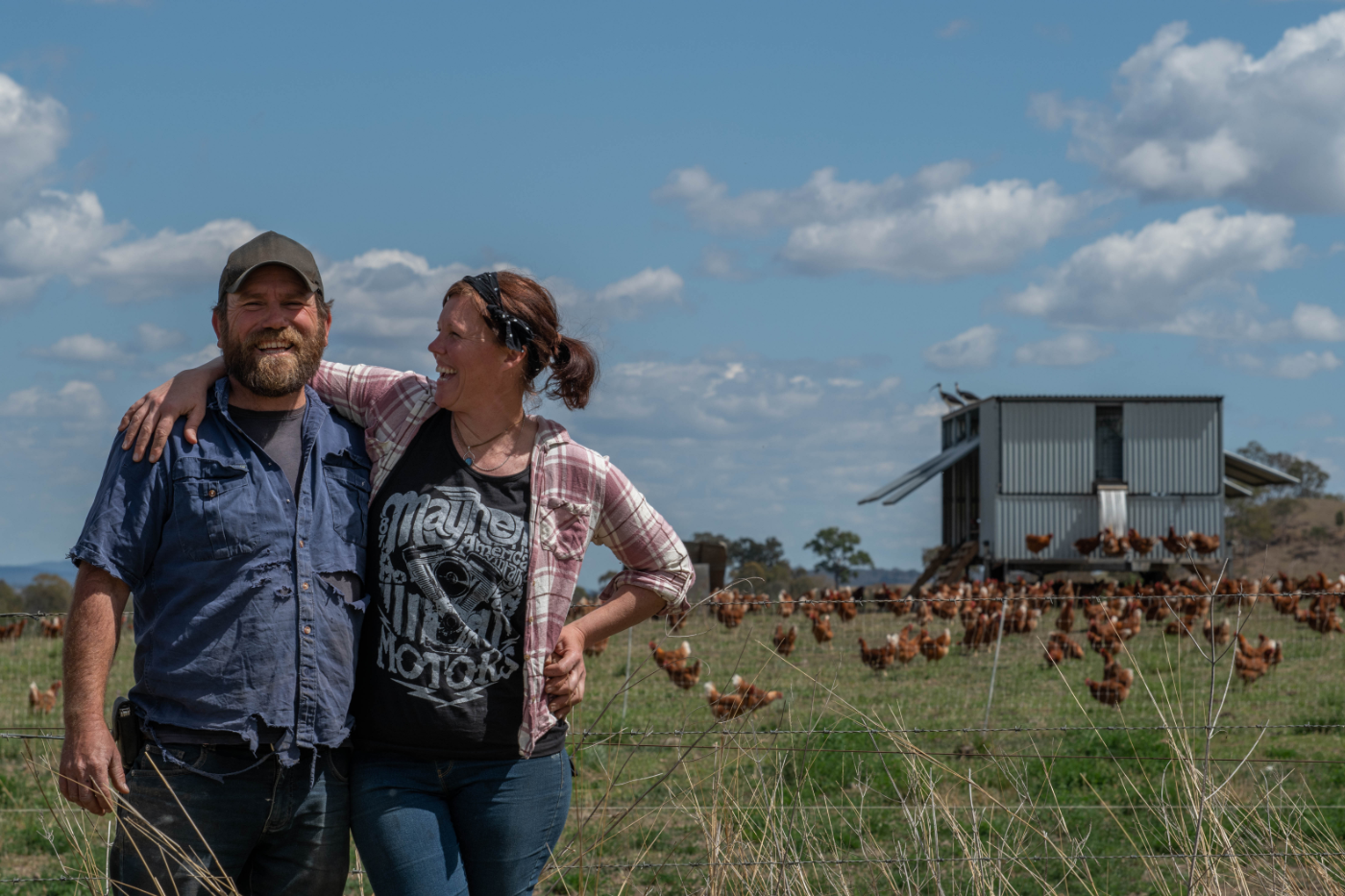
Randal and Juanita believe that everyone has a right to nutritious and healthy food, and believe in farming that is ‘Good for the animal, good for the land, good for the farmer and good for you’.
The Breens run an enterprise mix of cattle, sheep, poultry, pigs, hay/grain and seasonal small-scale cropping. Following a Holistic Management approach, they run a symbiotic farming system with no chemicals and use no-till and No-Kill diverse pasture cropping.
During his visit, Frank visited a recently grazed paddock, which uncovered lots of worms, a creek bed nestled between paddocks, a naturally-seeded multispecies corridor, and the farm’s highlands forest grazing area.
Slater (Isopoda: Oniscidea)
Slaters (also known as woodlice, sowbugs and pill bugs) are multi-legged, land-living crustaceans found all over Australia, with many species introduced from Europe. They are scavengers and feed mainly on decaying organic matter and are usually considered beneficial.
Life size: 10 mm
Wolf spider with egg sac (Lycosidae: Artoria)
Wolf spiders are robust and agile hunters with excellent eyesight. They are unique amongst spiders in the way that they carry their egg sac, attached to the spinnerets at the end of the female’s abdomen, allowing the spider to carry her unhatched young with her.
Life size: 15 mm
Scorpion (Arachnida: Scorpiones)
Scorpions primarily prey on insects and other invertebrates, but some species hunt vertebrates such as lizards and small mammals. Small animals are often killed only using the claws, however larger and more aggressive prey are stung with the venomous tail stinger.
Life size: 35 mm
Earthworm (possibly Microscolex phosphoreus)
Microscolex phosphoreus is an endogeic (shallow-burrowing) species of earthworm belonging to the family Acanthodrilidae, with a broad distribution throughout the world. It’s noteworthy for being bioluminescent when disturbed by predators, producing a glow which is visible at night.
Life size: 25 mm
Prospect Pastoral Co.
Ian & Di Haggerty
Mollerin, WA
naturalintelligence.co
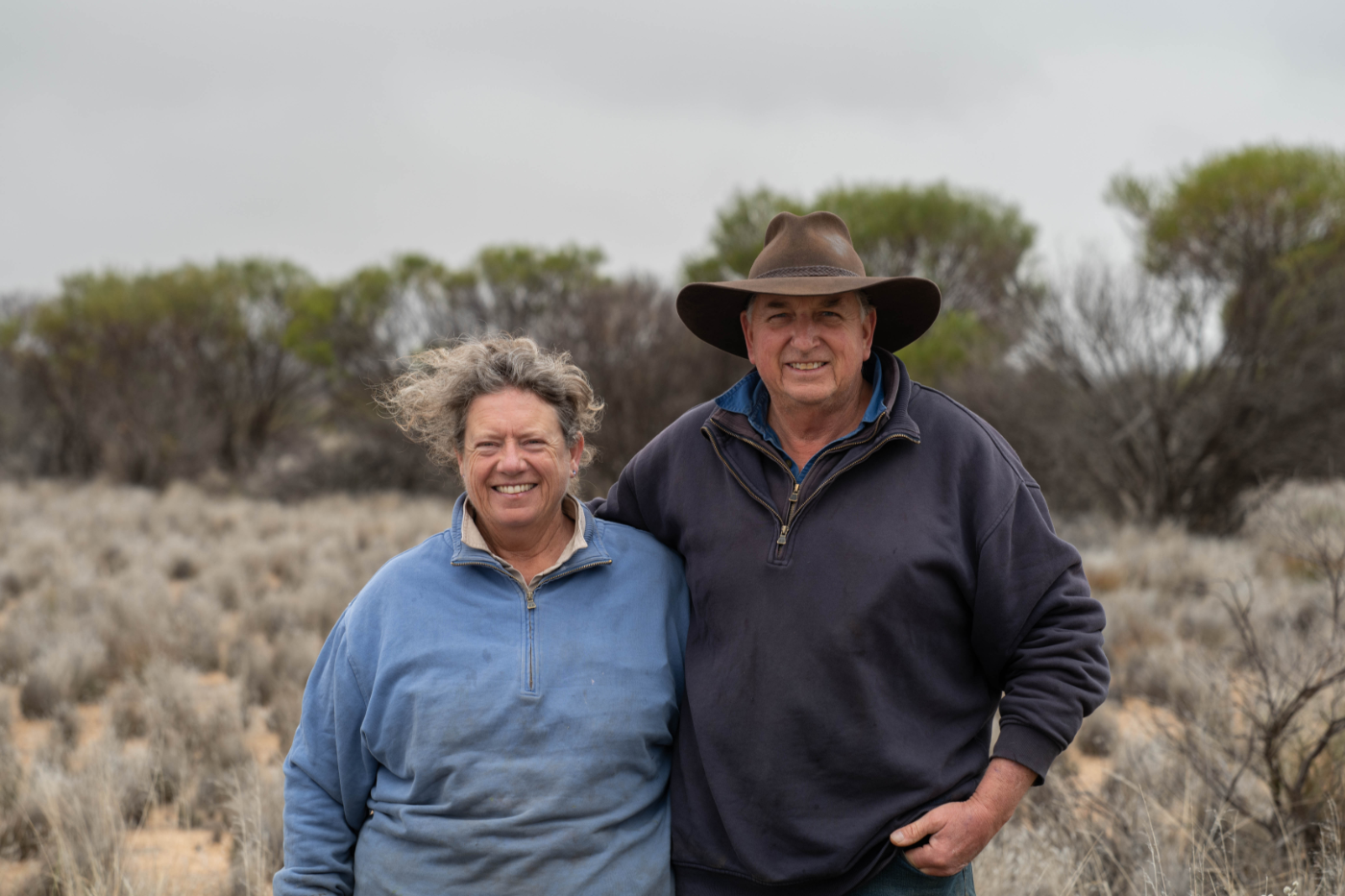
As founders of Natural Intelligence Farming, Ian and Di are passionate about landscape restoration and optimising epigenetic interactions to produce premium food and fibre products,
The Haggertys run an integrated program of mixed grains, multi species hay crops and grazing pastures for self replacing merinos for wool and nutritionally diverse sheep meat. Their Natural Intelligence Farming method integrates multiple avenues of natural interactions within soil, plant, animal, atmospheric and human microbiomes to facilitate optimal health outcomes for all participants in the ecosystem and beyond. Restoring small/ large water cycles and biodiversity within the landscape is foremost in promoting resilience within a changing climatic environment.
During Frank’s visit, they journeyed through a mixed species pasture with native perennial grass, saltbush , some lighter sand grazing paddocks with saltbush and blue bush, and then to a previously salt-affected area with saltbush plantings and other natives appearing, which had lots of fungal growth.
Slender springtail (Entomobrya sp.)
Springtails are distant relatives of insects, characterised by having a jumping organ (a ‘furca’) underneath their body that can fling them to safety if attacked. Entomobrya species such as this mainly feed on decaying plant material, and fungal hyphae and spores.
Life size: 2 mm
Pine Grove / Down Under Covers
Grant Sims
Lockington, VIC
downundercovers.com
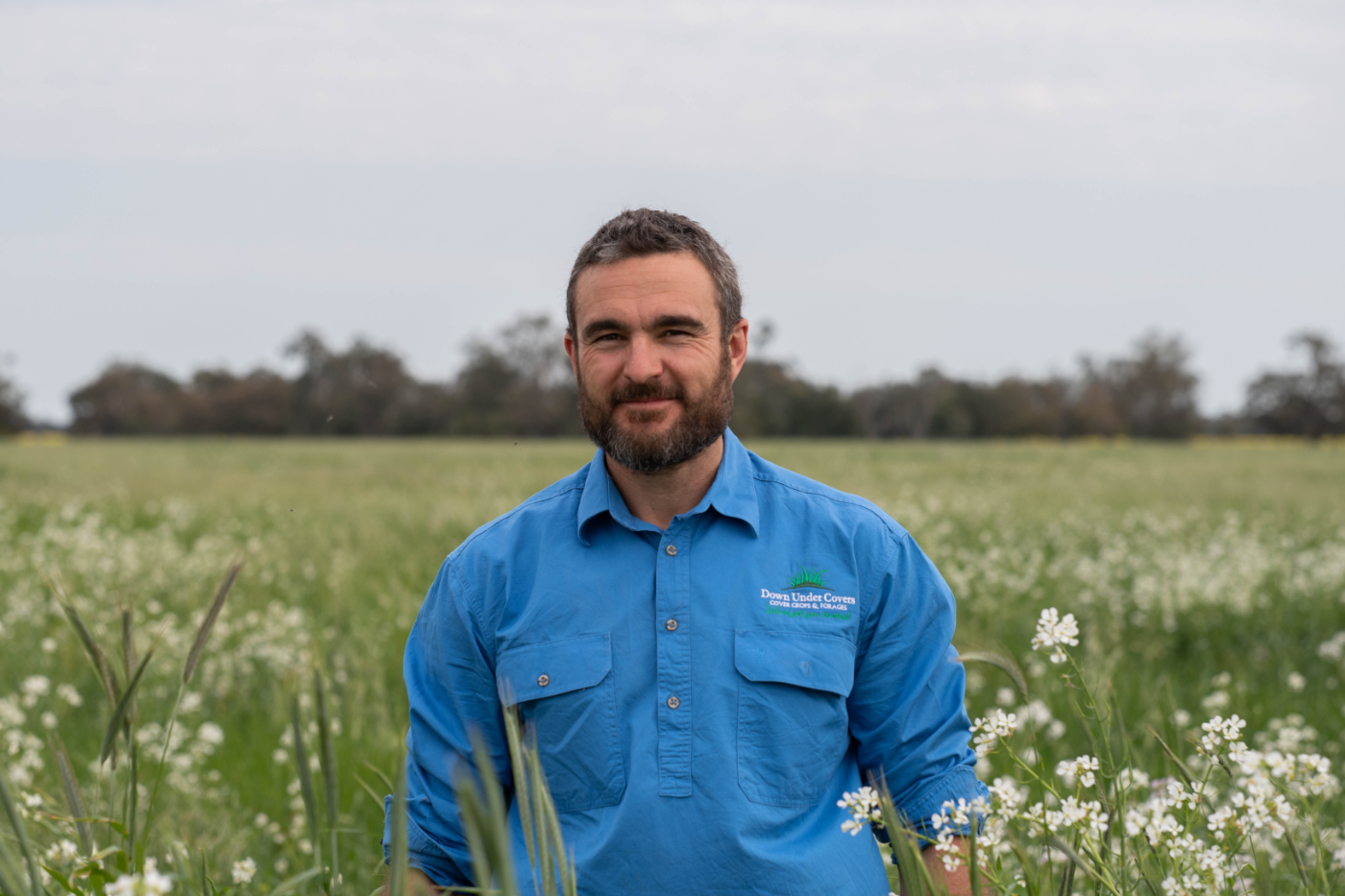
Grant is a passionate advocate for cover crops as a low-risk, low-input way to get maximum production above and below the ground that also provides excellent live weight and animal health gains. Grant runs a cropping enterprise of mostly oats, canola and wheat, multispecies pastures and cover crops, and sells cover crop seeds. Grant makes his own biostimulants applied as a foliar spray or as an inoculant on a bare seed, livestock integration, no-till and regular in-field monitoring.
Frank visited four paddocks at Pine Grove: A paddock currently sown with vetch; a paddock recently inundated and currently sown with a cover crop; a patch of remnant swamp gums that had had no cropping but some grazing; and a wheat paddock.
Fat Pig Farm
Matthew Evans and Sadie Chrestman
Glaziers Bay, TAS
fatpig.farm
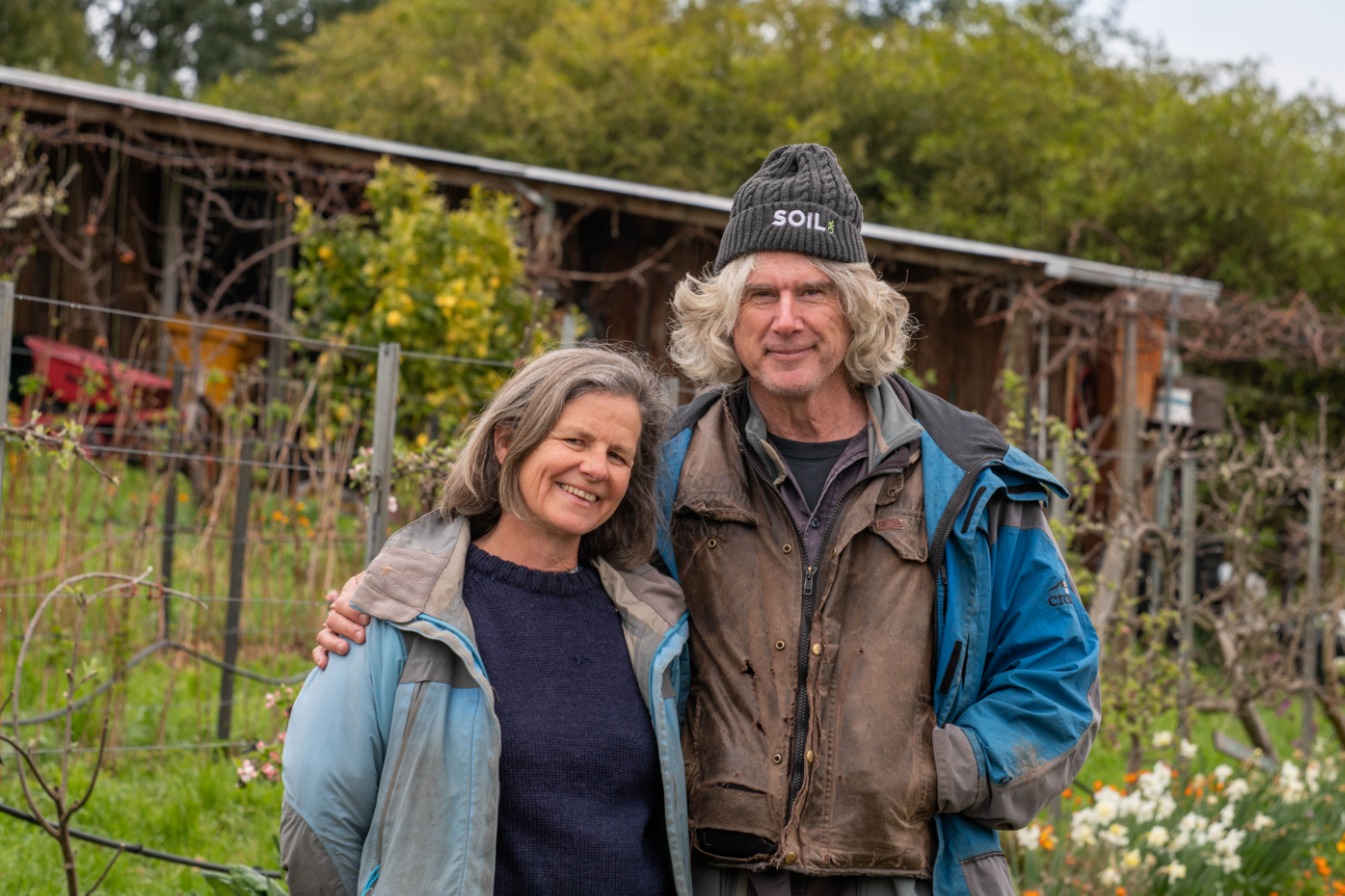
Matthew Evans and Sadie Chrestman are advocates for healthy, local and sustainable food and firm believers in knowing and trusting what you eat. They are passionate about regenerating landscapes and biodiversity, and that all begins with the treatment of soil. On 70 acres they grow enough food for 10,000 nutrient dense meals a year, all while improving soil health.
They have converted an apple orchard to a no-chemical market garden, run pigs and a micro dairy as well as goats on their mixed farm, which has a strong community component, including an onsite restaurant. Matthew and Sadie aim to build soil organic matter through rotational grazing, on-farm composting, cover crops, and are doing trial blocks using seaweed, lime, living microbes and molasses.
Frank spent time at Fat Pig Farm in the market garden’s rich dark soil and in the rotationally grazed paddocks.
Southern Toadlet (Pseudophryne semimarmorata)
This species of small frog is endemic to south-eastern Australia, including Tasmania. The species’ population is thought to be declining due to fungal disease, habitat loss and the effects of climate change on bushfire frequency and severity.
Life size: 20–30 mm
Plump springtail and snake millipede (Poduromorpha and Juliformia)
It’s very difficult not to find something endearing about the slow-moving and rather cumbersome little Poduromorpha springtails. They tend to be soil and litter-dwelling, however some species put their amazingly hydrophobic (water-repelling) cuticles to work and live on the surface of slow-moving bodies of water. Most millipedes are slow-moving detritivores, eating decaying leaves and other dead plant matter. Some eat fungi or drink plant fluids, and a small number are predatory.
Life size: 2 mm
Pauropod (Pauropodidae)
Pauropods are remarkable little Myriapods (relatives of millipedes), which all possess a unique type of branching antennae, scientifically called ‘biramous’ antennae. Feeding on fungi and organic matter, they’re found in leaf litter, soil, under stones and on decaying wood.
Life size: 1-2 mm
Terrestrial flatworms (Anzoplana trilineata & Newzealandia sp.)
Flatworms are mainly predators of other invertebrates, which they hunt, attack and capture using physical force and the adhesive and digestive properties of their mucus. The name Anzoplana comes from ANZ, a traditional abbreviation for Australia & New Zealand, combined with Latin plana, meaning flat.
Life size: 40-50 mm
Tas Ag Co
Sam and Steph Trethewey
Dunorlan, TAS
tasagco.com.au
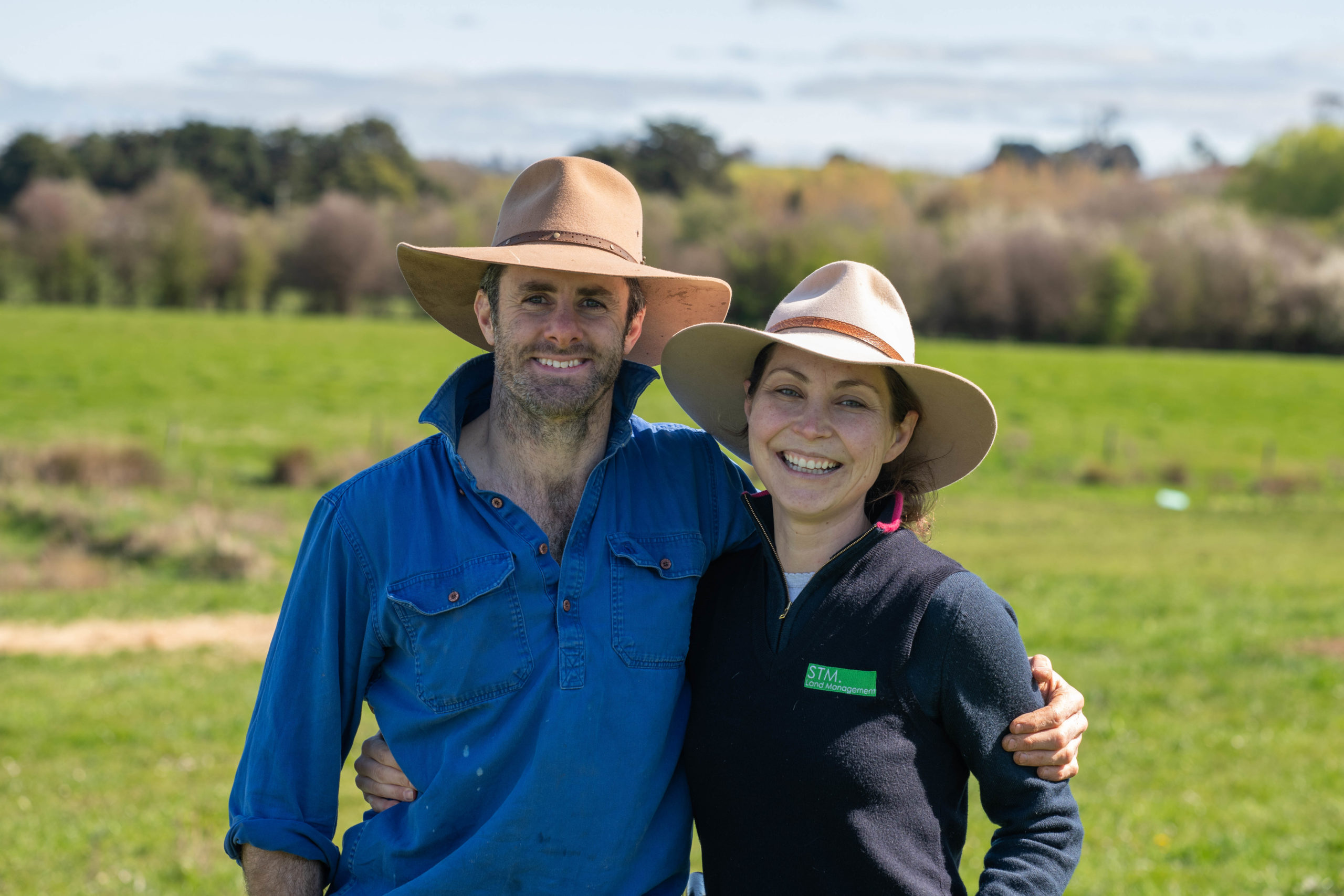
Sam and Steph are passionate about working with nature to repair landscapes, restore environmental health, create a nutritious and sustainable food product for the environmentally conscious consumer, and challenge the food industry to do better.
The Tretheweys run ‘beyond sustainable’ cattle on rotationally grazed multispecies pastures. They use holistic farming practices such as diverse cover crops, no-chemical applications, and low-disturbance trials. They also work on increasing biodiversity by fencing off waterways and old trees to plant and encourage local native species.
With Frank, they visited a multispecies pasture, a sacrificial paddock following a winter fodder crop graze and a recently improved pasture with chicory and plantain.




